Preparing your brand for a buyout or acquisition isn’t just a nice-to-have—it’s essential for maximizing valuation, attracting the right buyers, and ensuring a smooth post-acquisition integration. Companies with strong, clear, and consistent branding are more likely to stand out during due diligence, command higher valuations, and retain customers and employees during the transition. By taking strategic steps to strengthen your brand, you set your company up for both financial and operational success.
Understand the Role of Brand in Acquisitions
Buyers don’t just acquire products, services, or market share—they acquire your brand. A strong brand signals credibility, reliability, and market differentiation, which are key factors in valuation. Tangible assets like logos, websites, and collateral matter, but intangible assets—like reputation, thought leadership, and customer trust—often carry even more weight.
Key Takeaways:
- A well-positioned brand can increase perceived company value.
- Strong branding reduces risk perception for buyers.
- Intangible assets are often as critical as tangible ones in valuation.
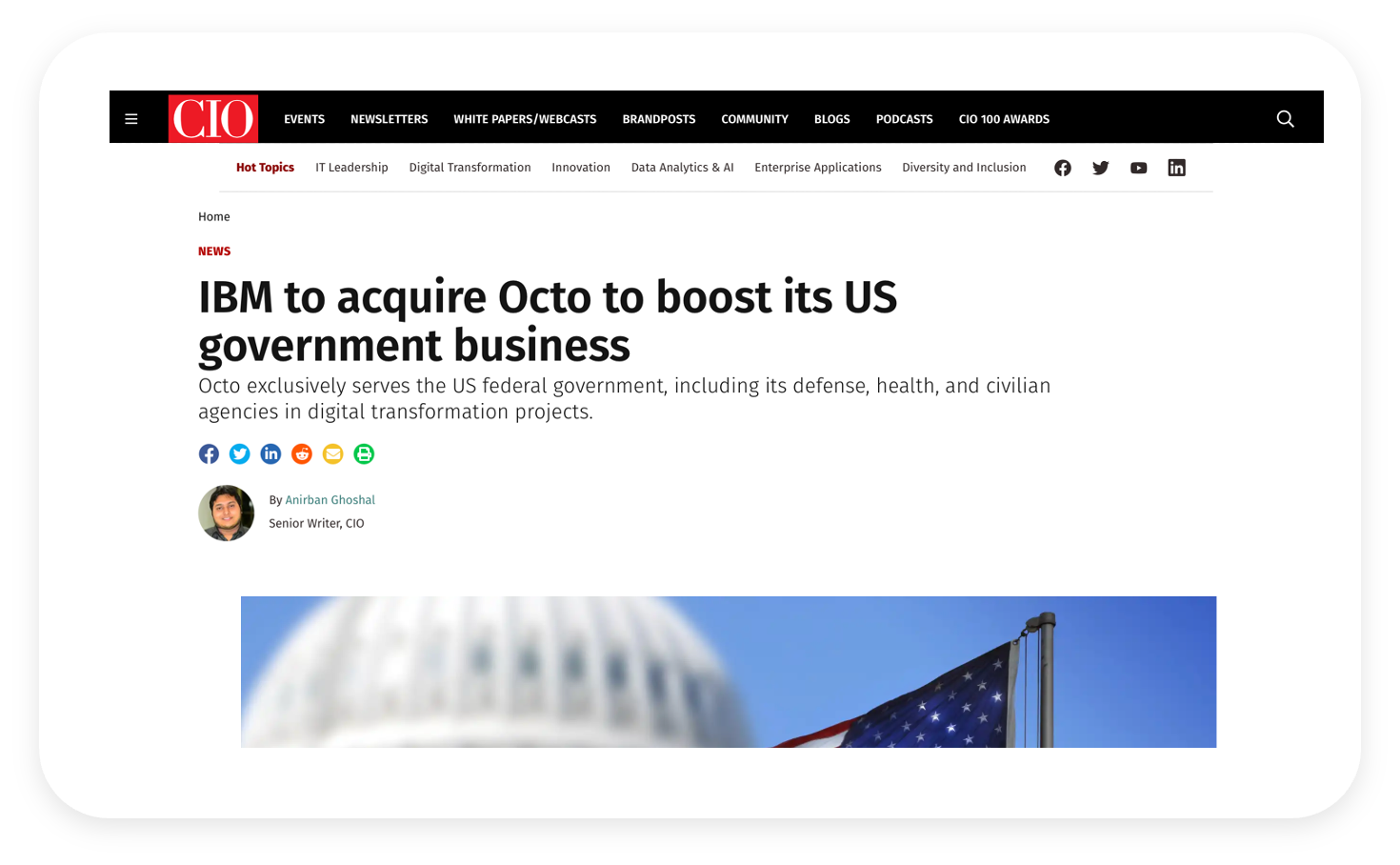
Audit Your Current Brand Positioning
A comprehensive brand audit is the first step in preparing for a sale. Evaluate your visual identity, messaging, digital presence, and market perception. Use analytics, surveys, and competitor benchmarking to uncover strengths and gaps. The goal is to ensure your brand communicates value clearly and resonates with potential buyers.
Action Steps:
- Review logos, color schemes, and visual design for modern appeal.
- Analyze messaging consistency across website, social media, and collateral.
- Benchmark against competitors to identify opportunities for differentiation.
Strengthen Brand Messaging and Identity
Clear, consistent messaging and a modern visual identity are crucial for attracting suitors. Define your value proposition and differentiate your company from competitors. Ensure messaging is consistent across websites, social media, presentations, and sales collateral. A strong, cohesive brand identity helps potential buyers quickly understand your company’s strengths, vision, and market potential.
Tips for Messaging Success:
- Highlight what makes your company unique.
- Use language that resonates with target buyers.
- Maintain consistency across all brand touchpoints.
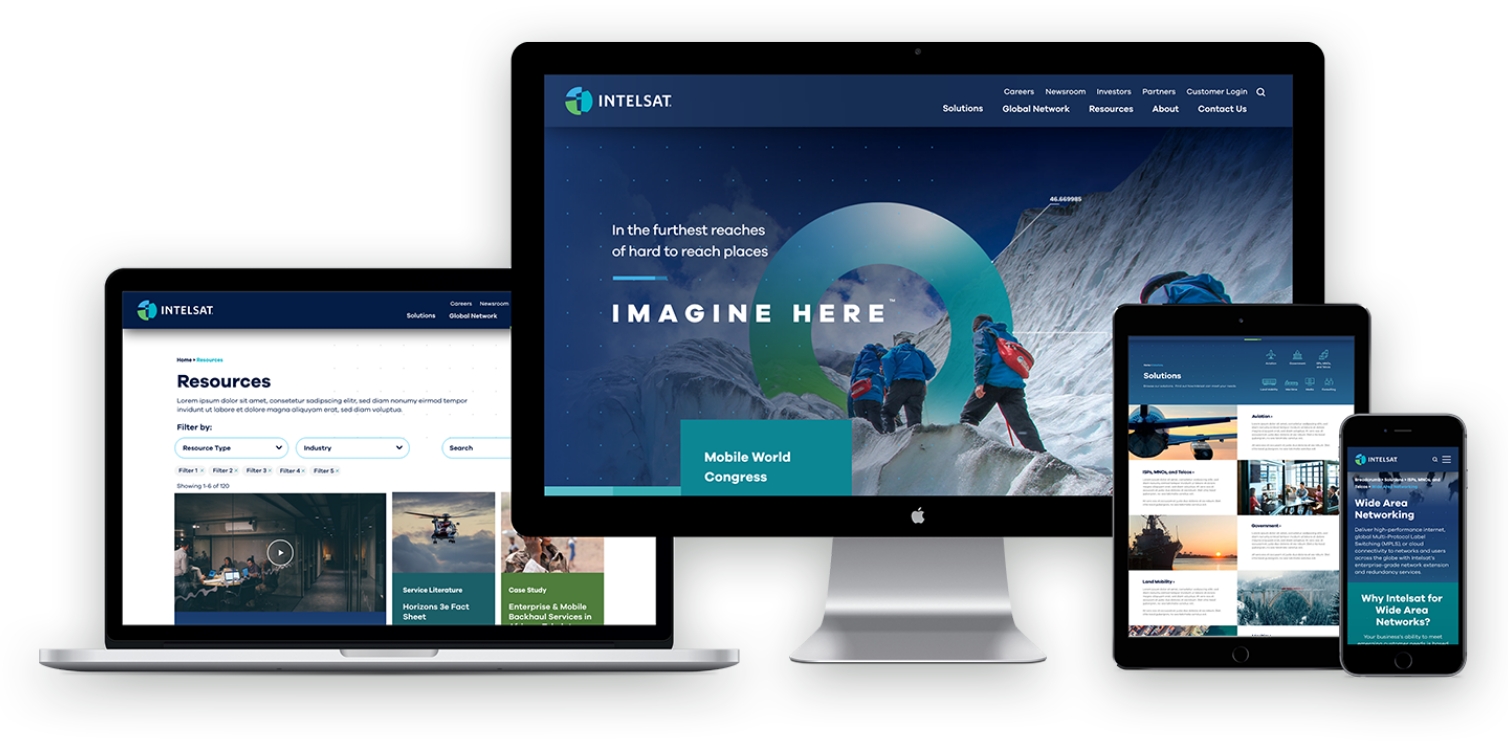
Enhance Digital Presence and Visibility
Digital credibility is a major factor in acquisition decisions. Optimize your website and social channels to reflect professionalism and thought leadership. Highlight customer success stories, industry recognition, and relevant content that demonstrates market authority. Maintaining an active, SEO-optimized digital presence increases your brand’s visibility and perceived value to prospective buyers.
Digital Strategies:
- Update and optimize website content for clarity and SEO.
- Promote thought leadership through blogs, articles, and social media.
- Showcase client success stories and industry recognition.
Prepare Brand for Integration Post-Acquisition
Post-acquisition integration is smoother when your brand aligns with the acquiring company’s culture and strategy. Maintain clear messaging and visual consistency to retain customer and employee trust. Provide guidance for stakeholders to understand brand evolution, ensuring a seamless transition while protecting the equity you’ve built.
Integration Considerations:
- Develop unified messaging for internal and external audiences.
- Align visual identity with the acquiring company where appropriate.
- Communicate changes clearly to employees and customers.
Case Examples & Best Practices
BlueHalo (formerly AEgis Technologies)
Bluetext partnered with AEgis Technologies to rebrand the company as BlueHalo, positioning it as a leader in defense and aerospace. The rebrand included a refreshed visual identity, modern messaging, and a polished digital presence that clearly communicated market differentiation. This strategic transformation played a critical role in attracting suitors and ultimately supported BlueHalo’s acquisition by AeroVironment for $4.1 billion.
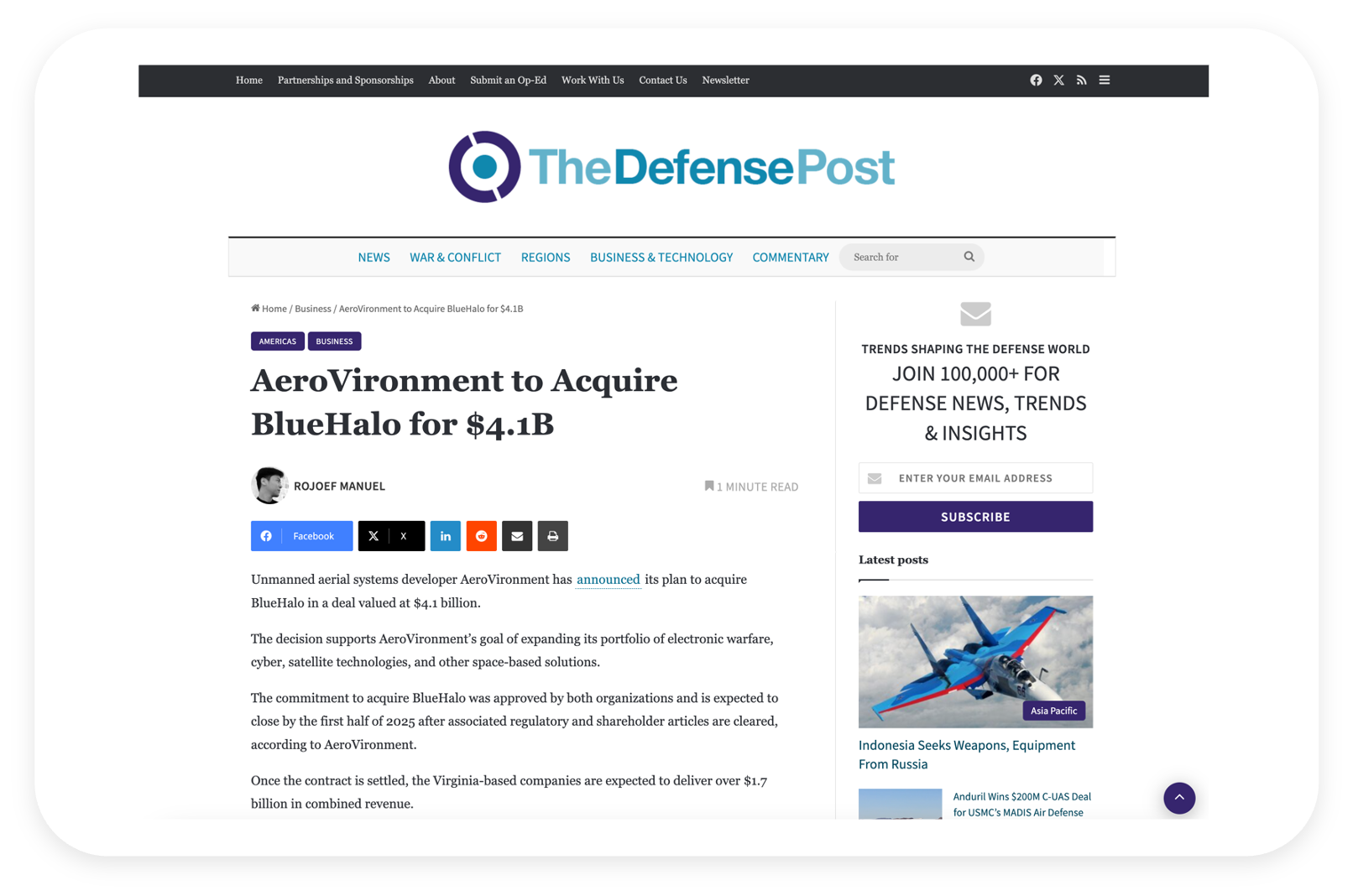
Quest Software
For Quest Software, Bluetext helped refine branding to emphasize product strengths, customer value, and market leadership. Through cohesive messaging, an updated visual identity, and enhanced digital assets, Quest presented itself as a compelling acquisition target. In November 2021, private‑equity firm Clearlake Capital acquired Quest from Francisco Partners in a deal reportedly worth $5.4 billion. The strengthened brand helped facilitate a successful sale and set the stage for smoother integration after acquisition.
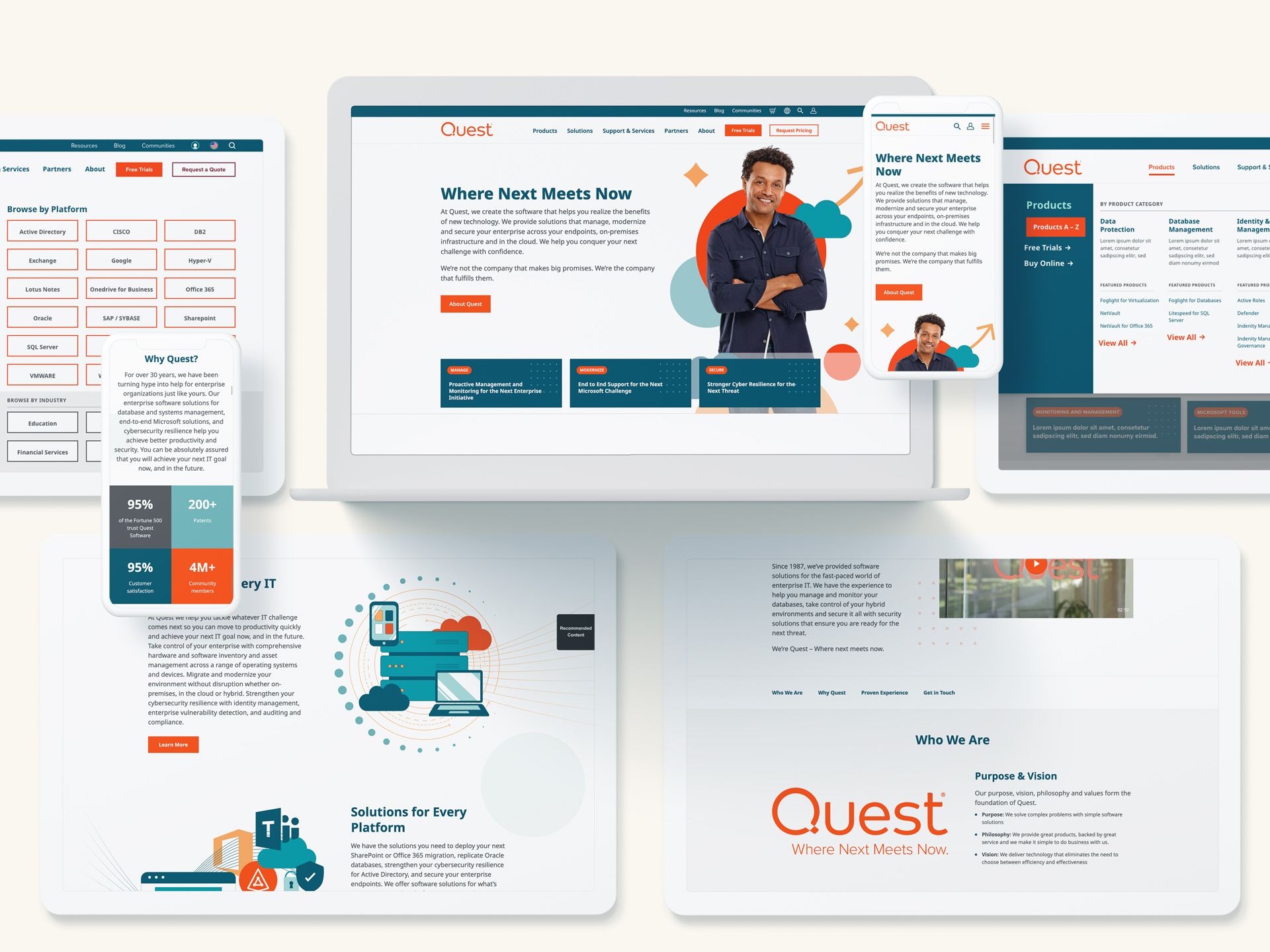
Next Steps for Your Brand
Preparing your brand for a buyout or acquisition is about maximizing value, attracting the right buyers, and protecting your company’s legacy during transition. Conduct audits, refine messaging, optimize digital presence, and plan for post-acquisition alignment to strengthen your market position. Contact Bluetext to ensure your brand is fully prepared for a successful buyout or acquisition.
In the fast-paced world of digital marketing, first impressions are formed in milliseconds. These split-second judgments often determine whether a visitor stays on your site, explores your services, or leaves. People decide emotionally first and rationally second. That is why thoughtful design, including colors, shapes, and layout, is more than decoration. It is strategic.
Designing with emotion means intentionally crafting visual experiences that build trust, guide perception, and create urgency. When done well, it can subtly influence buyer behavior and move prospects from curiosity to conversion. Let’s explore how colors, curves, and layout psychology help brands connect, convince, and close deals.
The Psychology of First Impressions
Research shows users form opinions about a website in under a second. That first glance tells them if a brand is credible, professional, and worth their time. These impressions are emotional as much as they are visual.
Visual cues like color, contrast, and spacing communicate confidence, clarity, and competence. In B2B, where decisions are complex and high-stakes, a website that evokes trust and clarity can make the difference between a lost lead and a signed contract.
Design that resonates emotionally does more than look good. It persuades.
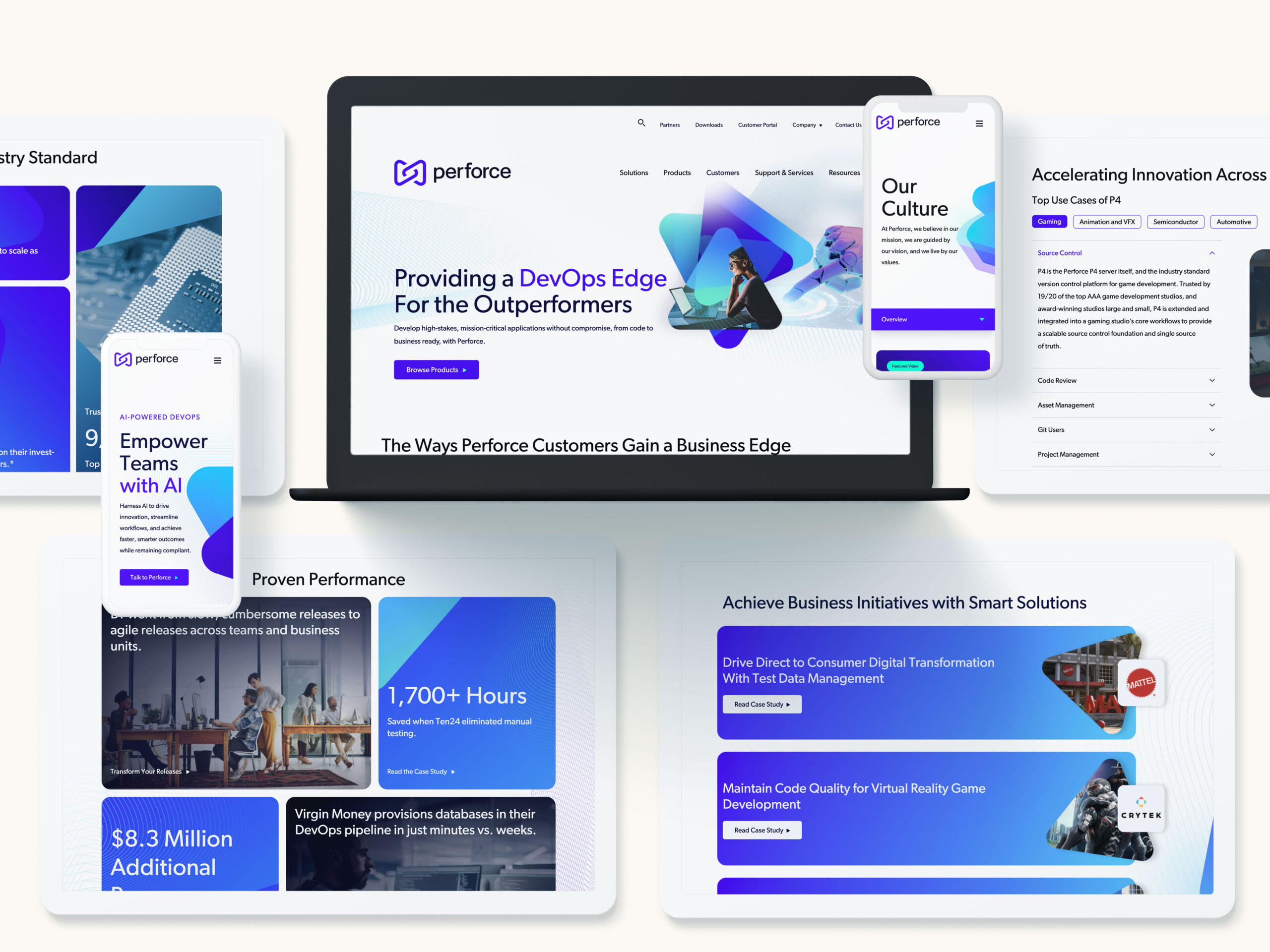
The Language of Color: Building Trust, Urgency, and Desire
Colors carry psychological associations that influence perception.
- Blue signals trust, stability, and professionalism. It works well for finance, tech, and telecommunications.
- Red creates urgency and draws attention, making it ideal for calls to action or limited-time offers.
- Green conveys growth, balance, and reliability. It is often used by sustainability-focused brands or B2B tech companies.
It is not just the choice of color, but how it is used. Contrast, saturation, and balance guide the eye and reinforce hierarchy. Choosing colors that align with your goals helps visitors feel confident, focused, and ready to take action.
The Science of Shape: Why Curves Feel Safer Than Corners
Shape psychology is powerful but often overlooked. Rounded edges and curves are perceived as approachable, friendly, and safe. Sharp angles communicate precision, assertiveness, or caution.
Buttons, icons, and content containers with curves can subtly encourage interaction. Tech companies like Apple and Google use rounded designs to suggest simplicity, reliability, and accessibility. Curves reduce friction and make digital experiences feel intuitive.
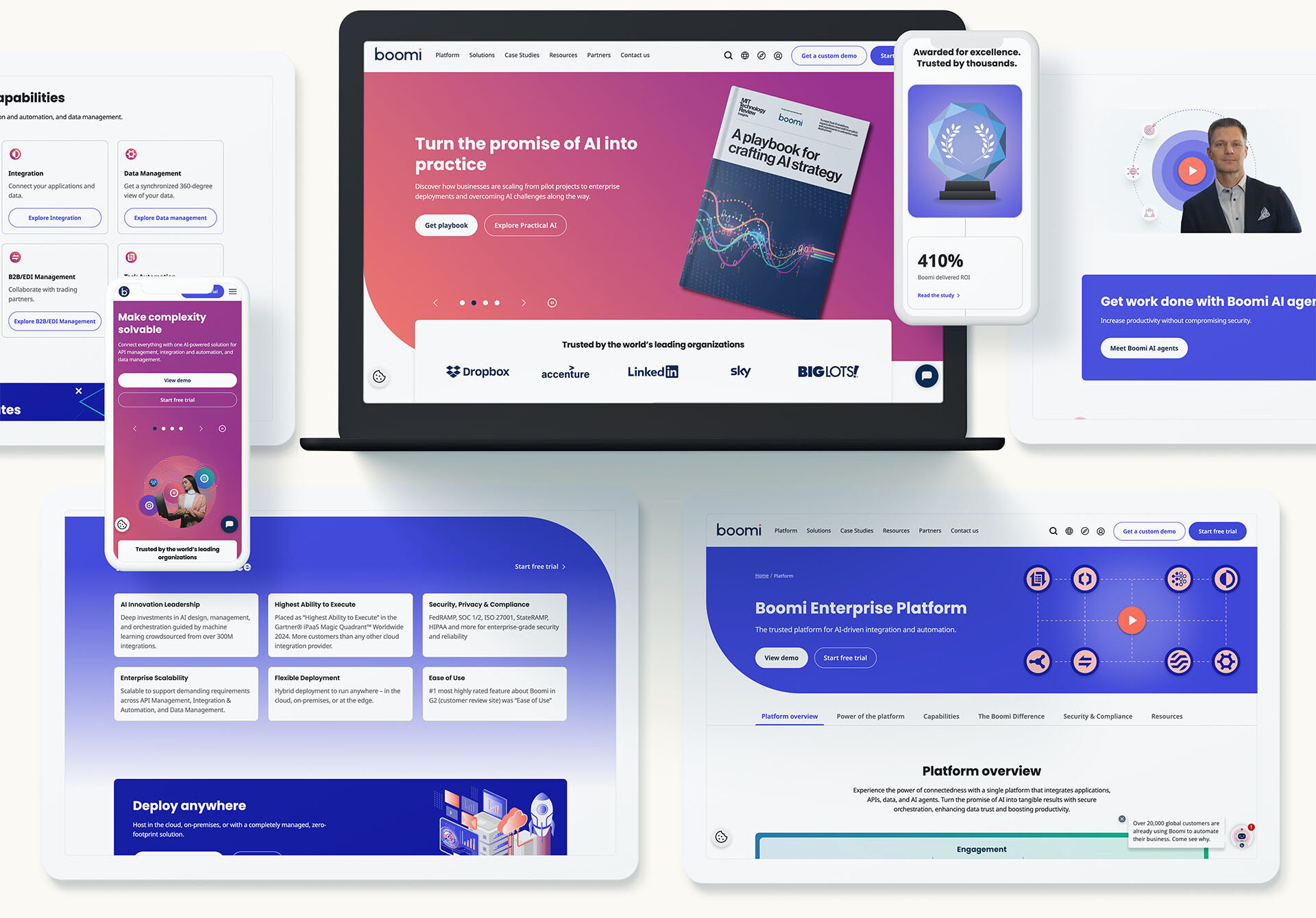
Layout, Space, and Flow: Designing for Calm and Clarity
Design is more than color and shape. Structure matters. White space, visual hierarchy, and symmetry guide attention and set emotional tone.
Cluttered pages can cause frustration. Balanced layouts signal professionalism and calm. Proper spacing highlights important content, guides the eye naturally, and makes your messaging easier to digest. Aligning layout with the buyer journey creates a subconscious flow that improves engagement.
Designing for B2B Audiences: Emotion Meets Authority
Some brands think emotional design only works for consumer audiences. The truth is decision-makers in B2B are human, and humans respond to emotion.
Subtle cues, like accent colors, consistent shapes, and clean layouts, communicate authority and reliability. For tech audiences, combining bold structures with approachable accents conveys professionalism while remaining human. Strategic emotion makes complex offerings feel accessible without reducing credibility.
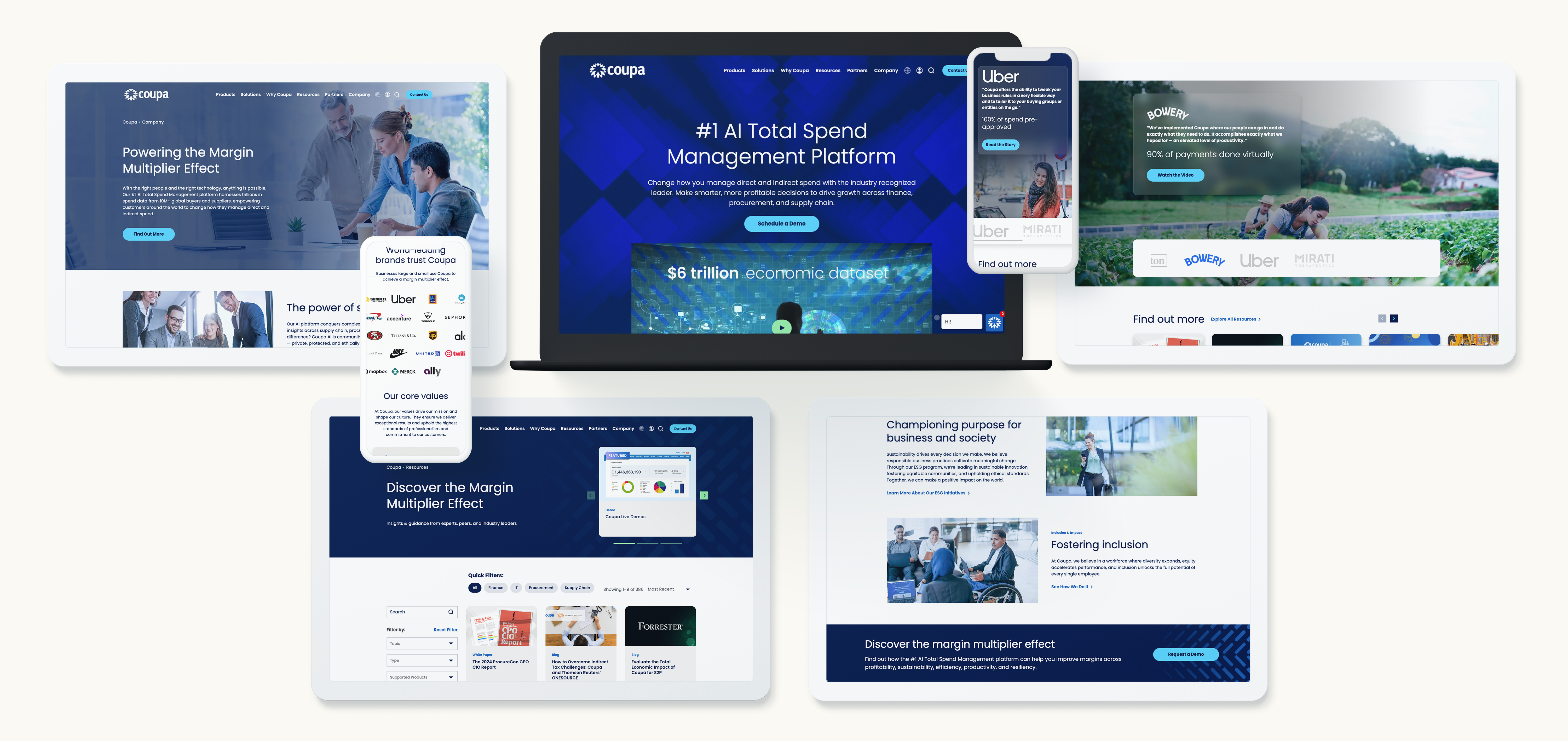
From Aesthetics to ROI: Measuring the Emotional Impact of Design
Emotional design can be measured through engagement metrics. Key indicators include:
- Bounce rate and time on page
- Form submissions and content downloads
- Scroll depth and navigation patterns
- Brand recall from surveys or heat maps
User testing and analytics help validate which design choices foster trust and guide action. Well-crafted design becomes not just creative but an engine for conversion.
Designing with Emotion and Intention with Bluetext
Design that sells is intentional. Every color, curve, and layout choice should align with the emotions you want your audience to feel and the actions you want them to take.
At Bluetext, we combine behavioral insight, design strategy, and creative execution to craft experiences that engage emotionally and perform strategically. From color psychology to motion design, we help brands create digital experiences that look great and close deals.
Ready to design with purpose and emotion? Contact Bluetext to build experiences that inspire trust, guide perception, and drive measurable results.
In today’s attention economy, brands don’t have minutes—or even seconds—to make a first impression. Studies show that people form an opinion about a brand in as little as seven seconds. In the fast scroll of digital content, those moments are everything. Whether it’s a homepage hero animation, a LinkedIn video, or a product teaser, your audience is deciding almost instantly if your story is worth their time.
For B2B marketers, that might sound like a challenge built for consumer brands. But the truth is, short-form storytelling isn’t just for B2C anymore. It’s a powerful tool for any brand trying to connect quickly, authentically, and memorably.
Why Seven Seconds Defines Modern Storytelling
The “seven-second rule” has its roots in psychology: humans are wired to make snap judgments based on limited information. Online, that instinct translates into how quickly we process design, tone, and motion. Research from Microsoft found that average attention spans have dropped to around eight seconds—and that number continues to shrink as content becomes denser and more competitive.
For B2B audiences, the challenge is no different. Executives, engineers, and decision-makers scroll through the same feeds as everyone else. The first few seconds of your message determine whether your brand earns their curiosity—or disappears into the noise.
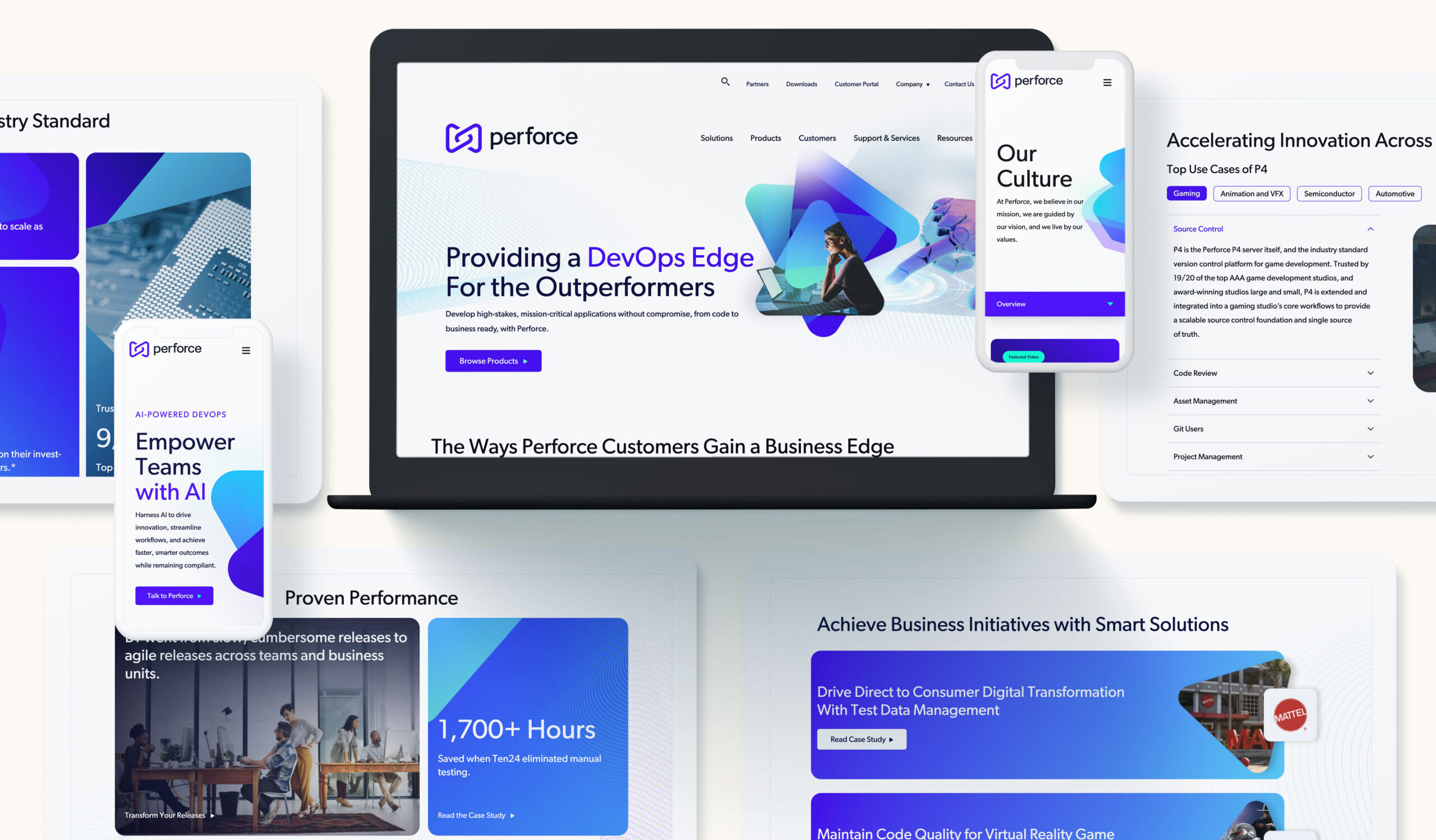
The Psychology of First Impressions
In marketing, first impressions are rarely rational. They’re emotional. Psychologists refer to this phenomenon as “thin-slicing”—our ability to infer meaning or intent from very brief experiences. That means your audience is forming opinions based on visual language, color, typography, motion, and tone before they even process your words.
Emotion plays a defining role. A confident, clear intro evokes trust. A cluttered or ambiguous message signals confusion. Effective storytelling doesn’t overwhelm—it distills your essence into something instantly relatable. That’s why brands like Salesforce, HubSpot, and AWS build consistency across their visual and verbal identities—so even a fleeting encounter leaves a lasting imprint.
The Anatomy of a 7-Second Story
A great seven-second story has three simple components:
- The Hook (1–2 seconds):
Capture attention immediately. This could be a bold visual, a powerful statement, or an emotional cue. Think of the opening frame as the first handshake. - The Message (3–4 seconds):
Clearly communicate what your brand does—or more importantly, what it stands for. Focus on outcomes, not features. For example, “Transforming secure communication for government agencies” tells a clearer story than “Leading provider of encrypted software solutions.” - The Emotion (final 1–2 seconds):
Leave your audience with a feeling—confidence, curiosity, inspiration. This emotional residue is what drives recall and future engagement.
The best intros work like visual haikus: compact, evocative, and unmistakably yours.
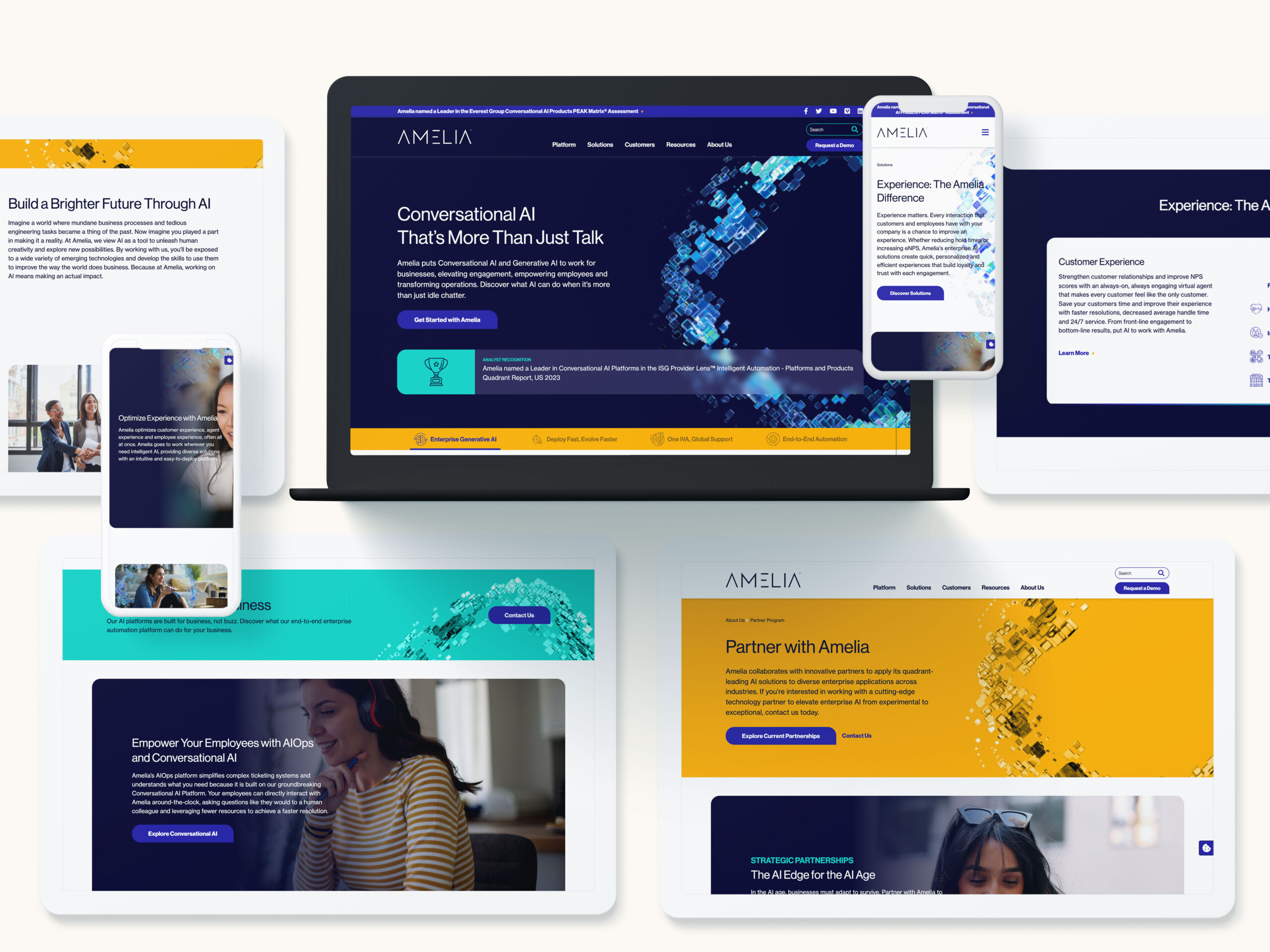
Why Short-Form Isn’t Just for B2C
Short-form content once belonged to consumer marketing—fashion, entertainment, lifestyle. But as digital behaviors converge, B2B brands have realized that storytelling fundamentals are universal. A CIO watching a 15-second explainer or a 7-second brand teaser is still responding to the same cues as a consumer: authenticity, clarity, and emotion.
LinkedIn has become a showcase for this shift. Brands like Adobe, Deloitte, and Accenture use short-form storytelling to communicate complex ideas in digestible bursts. Even government-focused organizations are using microvideo and motion design to explain big ideas—like modernization, cybersecurity, or innovation—without losing their audience halfway through a paragraph.
Short-form storytelling doesn’t replace thought leadership or long-form content. It amplifies it. Those seven seconds open the door to deeper engagement down the funnel.
Crafting Impactful Short-Form Brand Stories
So how do you actually tell a brand story in seven seconds or less? Start by zooming out before you zoom in.
- Lead with your core narrative, not your product. What do you stand for? What problem do you exist to solve? Those answers drive emotion far better than a feature list.
- Translate your brand pillars into micro-moments. Identify visual or verbal cues that instantly signal who you are—whether it’s a tagline, tone, or recurring motif.
- Design for silence. Many short-form videos autoplay without sound, so ensure your story works visually. Captions, motion, and typography should all do the heavy lifting.
- Script for attention. Every frame should earn its place. Use visual pacing and rhythm to maintain energy without overwhelming.
- End with action. Even a subtle CTA—like “Learn how” or “Discover what’s next”—can turn a passing glance into measurable engagement.
At Bluetext, we often say: great stories don’t start big, they start clearly. When you can express your value in seven seconds, everything after becomes easier.
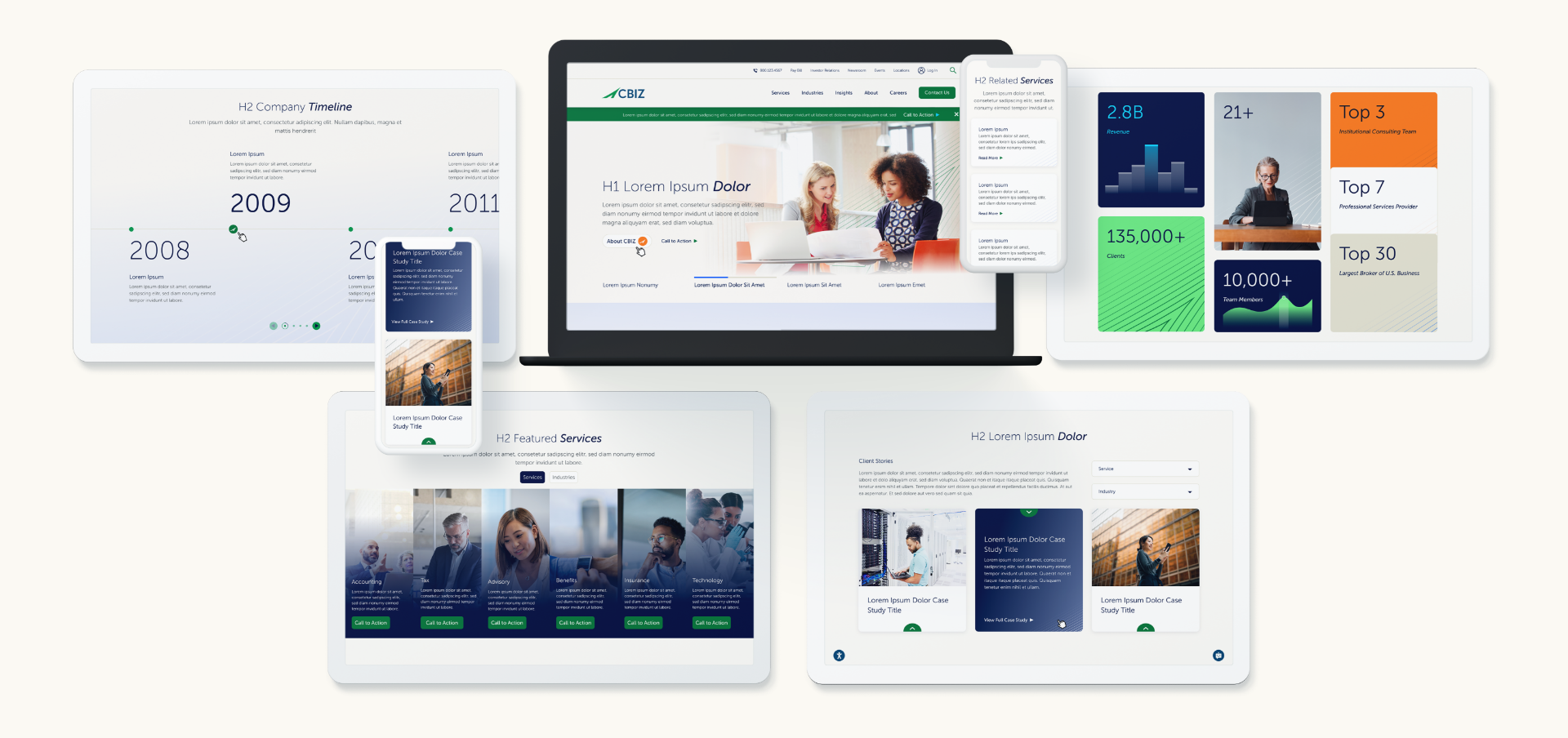
Measuring the Impact of Fast Storytelling
In short-form storytelling, every second counts—and so does every data point. The most telling metrics aren’t just views, but view-through rates, retention curves, and engagement quality.
If your audience consistently drops off after three seconds, the hook may need refinement. If your completion rates are high but conversions lag, your CTA might be misaligned.
Use A/B testing to experiment with visuals, copy, and structure. Even small adjustments—a color shift, a headline tweak, a new voiceover—can yield dramatic differences in audience retention. Over time, data reveals not just what works, but why it works.
From Seven Seconds to Lasting Impressions
Seven seconds might define the beginning of your brand story—but the goal is to make that story last. Every short-form asset should connect seamlessly to the larger narrative: your website, your campaigns, your brand voice. When those micro-moments align, they build recognition, trust, and ultimately conversion.
Short-form storytelling isn’t a trend—it’s the new language of brand communication. For organizations that embrace it, seven seconds isn’t a limit. It’s an opportunity.
Ready to Capture Attention in Seconds?
At Bluetext, we help brands turn fleeting moments into powerful connections. From short-form video and motion design to integrated storytelling campaigns, we craft strategies that resonate instantly—and endure long after the scroll.
Contact Bluetext to see how your brand can make every second count.
Expanding your SaaS or service brand globally is an exciting but challenging endeavor. While growth opportunities abound, so do pitfalls—especially when it comes to maintaining cultural relevance. Many brands stumble by assuming that a one-size-fits-all approach will resonate across markets. The truth is, successful global brands balance consistency with local adaptation, ensuring they feel both familiar and relevant to regional audiences.
This guide explores practical strategies for building a global brand with local flavor, helping you scale internationally while staying connected to your customers’ cultural context.
Why Local Flavor Matters in Global Branding
When brands expand internationally, they often face a delicate balancing act: staying true to their core identity while connecting with local audiences. Cultural nuances—like communication styles, social norms, and visual preferences—can dramatically influence how your brand is perceived.
Ignoring these subtleties can lead to campaigns that feel generic, alienating, or even offensive. For SaaS and service brands, cultural relevance isn’t just a nicety; it’s a growth driver. Customers are more likely to trust and adopt solutions that respect local customs, speak their language, and reflect their values.
For example, a global software provider that uses a U.S.-centric marketing campaign may see limited engagement in regions where humor, color symbolism, or messaging norms differ. Tailoring your approach ensures your brand feels accessible and trustworthy, increasing adoption and loyalty.
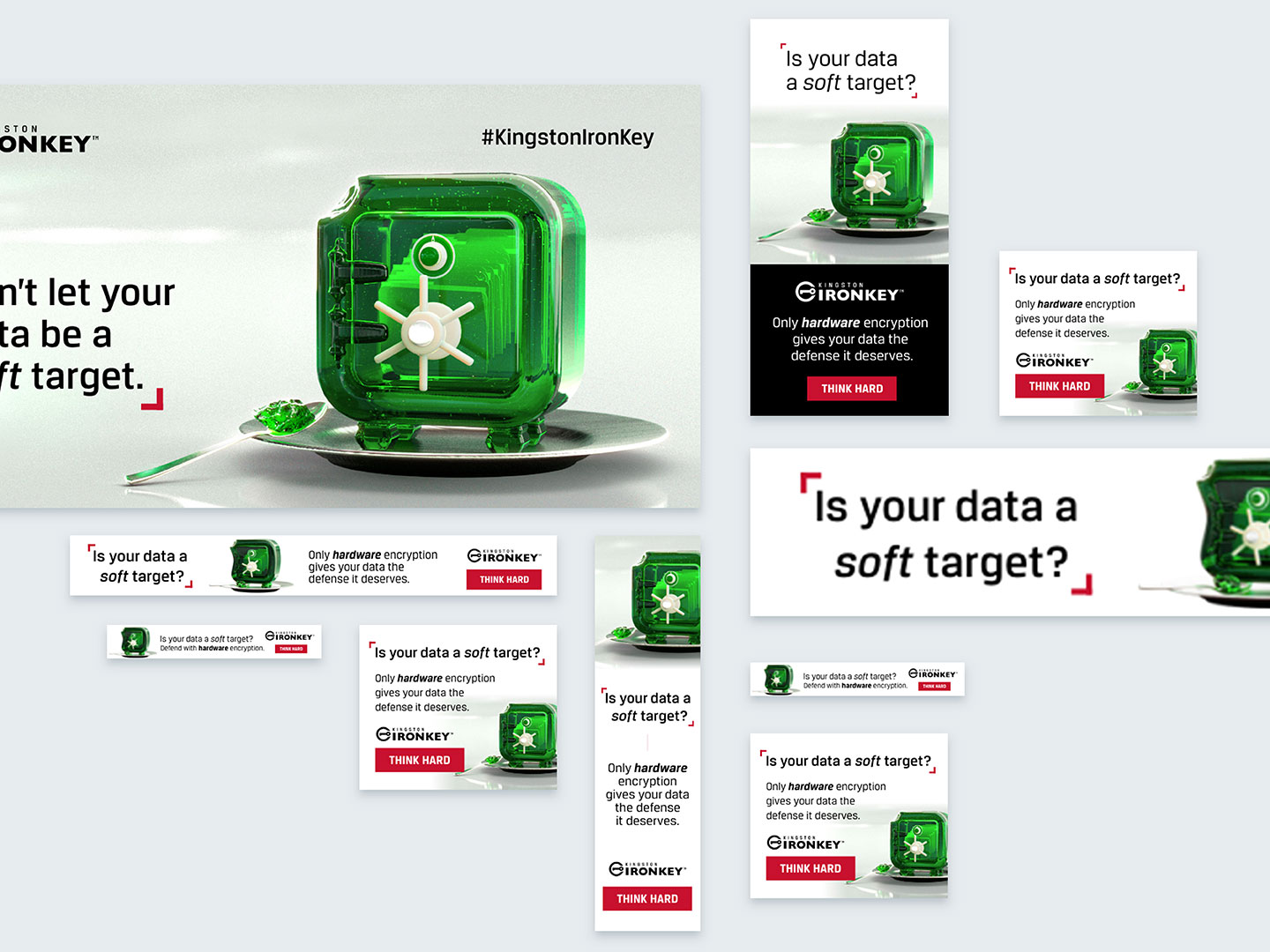
Core Principles for Balancing Global Consistency and Local Adaptation
Building a brand that thrives globally requires intentional strategy. Here are four core principles to guide your efforts:
1. Brand Guidelines with Flexibility
Consistency is critical for brand recognition, but rigidity can stifle local relevance. Maintain a clear brand voice, visual identity, and messaging framework while allowing regional teams to adapt them. This flexibility ensures the brand resonates locally without losing its global cohesion.
2. Localized Content Strategy
Content drives perception. Translating your website, blog posts, and campaigns is a start—but true localization goes further. Tailor examples, imagery, and references to local contexts. Highlight regional success stories or case studies to make your brand feel personally relevant.
3. Cultural Intelligence in Marketing Teams
Building local insight requires expertise. Employ in-market consultants or hire local team members who understand cultural norms, consumer behavior, and regulatory landscapes. Their perspective will help prevent missteps and enhance campaign effectiveness.
4. Consistent Value Proposition, Adapted Expression
Your core brand promise should remain uniform across markets, but the way it’s communicated can differ. For instance, emphasizing innovation in one market may resonate, while trust and reliability may be more effective elsewhere. Balancing consistency with cultural nuance is key.

Step-by-Step Approach to Building a Global Brand with Local Flavor
A structured approach reduces risk and maximizes impact when entering new markets. Follow these steps to scale globally while staying locally relevant:
1. Research Local Markets
Before launching, understand local competitors, consumer behavior, regulatory requirements, and cultural preferences. Use surveys, focus groups, and local market research to uncover insights. Knowledge is the foundation for effective localization.
2. Segment and Prioritize Regions
Not all markets are equally ripe for expansion. Evaluate opportunity based on market size, growth potential, cultural alignment, and logistical feasibility. Prioritize markets where your product naturally fits and where you can gain traction quickly.
3. Adapt Marketing Campaigns
Localization goes beyond translation. Adapt language, visuals, symbols, and messaging to reflect local tastes. Avoid literal translations; instead, aim for contextually meaningful messaging that feels native to each audience.
4. Leverage Local Influencers and Partners
Local influencers, partners, and thought leaders can amplify your brand’s credibility. Collaborating with respected voices helps your message feel authentic and trusted. Partnerships can also provide insights into regional trends and customer expectations.
5. Test, Measure, and Iterate
No strategy is perfect on the first attempt. Launch pilot campaigns in select markets, track engagement metrics, and collect qualitative feedback. Use these insights to refine your messaging, campaigns, and product positioning before scaling broadly.

Common Challenges and How to Overcome Them
Even experienced brands encounter hurdles when expanding internationally. Here’s how to navigate the most common challenges:
1. Balancing Global vs. Local Control
Too much centralization can make campaigns feel rigid, while too much decentralization risks brand dilution. Establish clear brand principles, then empower local teams to adapt campaigns intelligently.
2. Avoiding Cultural Missteps
Misunderstanding local customs, humor, or symbolism can harm your brand. Conduct cultural audits and consult local experts to avoid errors that could undermine trust.
3. Managing Multilingual Teams
Coordinating messaging across languages and regions can be complex. Use collaboration tools, translation memory systems, and clear communication protocols to ensure consistency without stifling local adaptation.
4. Tracking Metrics Across Markets
Different markets may prioritize different KPIs. Establish global benchmarks while allowing flexibility for local metrics that capture engagement, sentiment, and adoption in context.
Actionable Takeaways
Scaling globally doesn’t mean sacrificing cultural relevance. By combining consistent brand principles with locally tailored strategies, SaaS and service brands can build trust, engagement, and adoption worldwide.
Key takeaways:
- Research and understand each target market.
- Maintain brand consistency but allow local flexibility.
- Leverage local influencers and partners for credibility.
- Test, measure, and iterate campaigns to optimize impact.
Global expansion is complex, but with the right balance of strategy and cultural insight, your brand can resonate in every market.
Your brand is your organization’s most visible asset. It tells your audience who you are, what you stand for, and why they should care. But over time, even strong brands can feel stale, misaligned, or out of step with the market. The question for many leaders becomes: is it time to completely rebrand, or could a strategic refresh keep your identity current without losing equity? In this post, we’ll explore how to identify whether your brand needs a full reinvention, a refresh, or just some fine-tuning—and when resisting a change is actually the smarter move.
Understanding the Difference: Refresh vs. Rebrand
Before making any major moves, it’s critical to understand the distinction between a brand refresh and a full rebrand. A brand refresh updates visual elements like your logo, typography, or color palette, and may refine messaging, all while maintaining the essence of your current identity. Think of it as giving your brand a facelift rather than starting from scratch.
A full rebrand, on the other hand, is a complete transformation of how your organization is perceived. This might involve redefining your audience, repositioning your mission, or even changing your company name. Brands like Meta, which evolved from Facebook, illustrate how a rebrand can signal a fundamental shift in purpose and market perception.
Quick Tip: Ask yourself, “Do we need to be recognized differently by the world, or do we just need a fresh look?” This question is often the clearest indicator of the path forward.
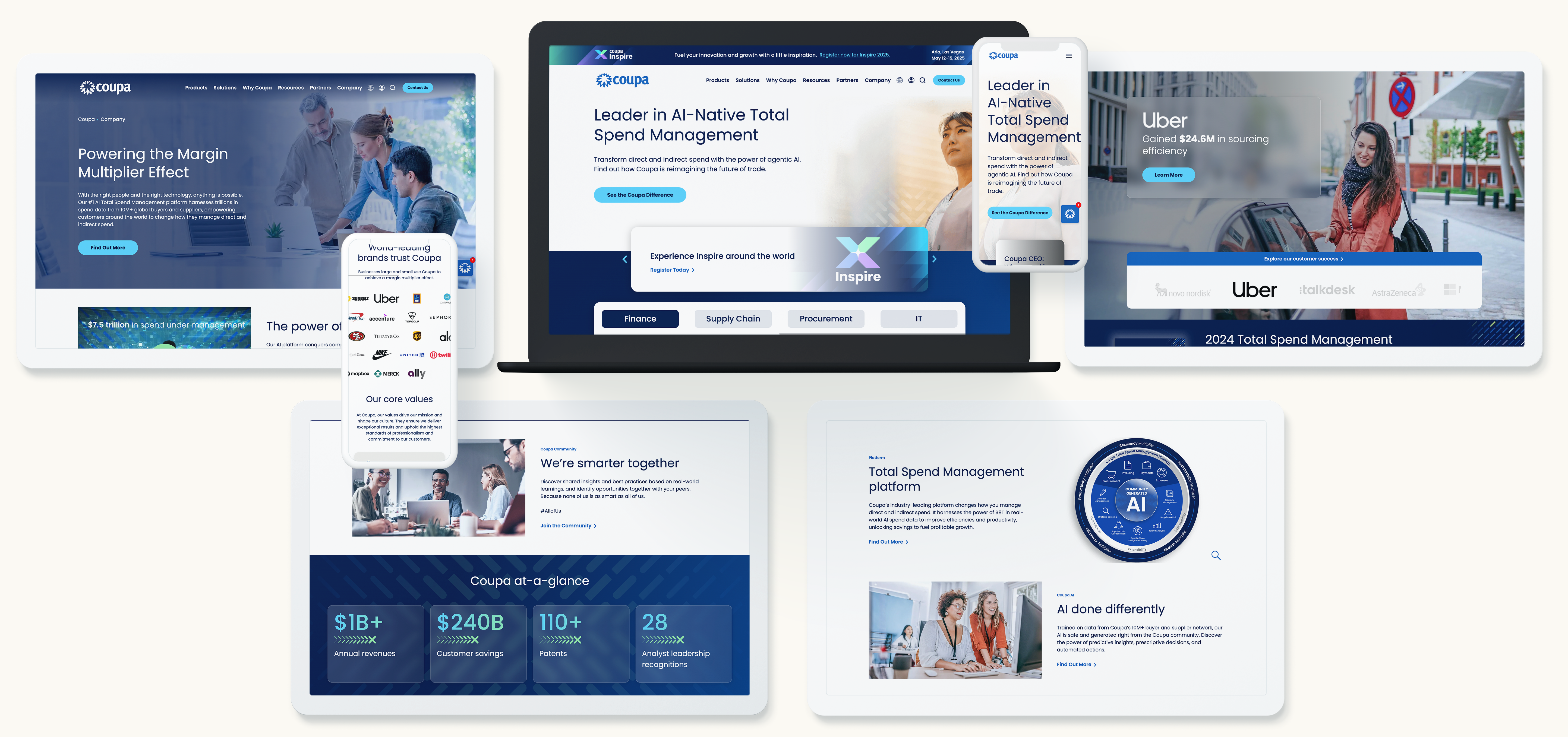
Signs It’s Time to Rebrand
Knowing when to rebrand is critical. Here are key signals that your organization might need more than a simple refresh:
- Your mission or audience has shifted. If your company’s offerings, goals, or target audience have evolved significantly, your brand may no longer align with reality.
- Your visual identity feels outdated. Dated logos, inconsistent typography, or cluttered messaging can make your brand feel out of touch.
- Competitors have overtaken your relevance. When rivals consistently appear fresher or more aligned with market trends, your brand risks losing credibility.
- Market confusion or negative associations exist. If people misunderstand your purpose or associate your brand with outdated perceptions, it’s time for a change.
- Organizational changes have occurred. Mergers, acquisitions, or leadership shifts often necessitate a rebrand to reflect a unified identity.
Brands that recognize these signs early often gain a competitive edge by reasserting their relevance and strengthening market position.
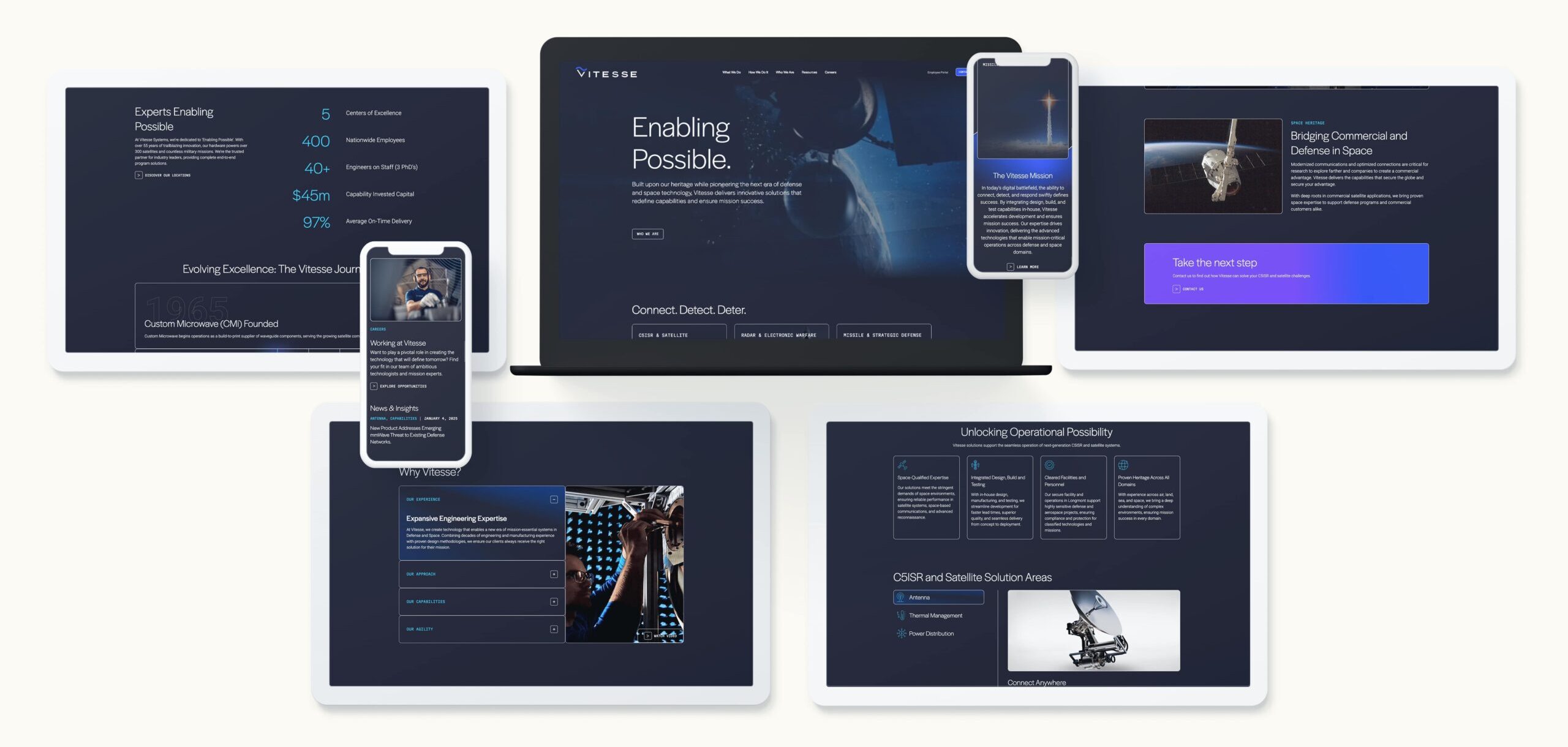
When to Resist: Why Rebranding Isn’t Always the Answer
Rebranding carries risks—lost recognition, confused audiences, and wasted resources—so it’s just as important to know when to resist. Here’s when staying the course makes sense:
- Your challenges are operational, not perceptual. Issues like slow delivery or product quality won’t be solved with a new logo.
- You’re chasing trends. Rebranding because of a short-term fad can backfire, leaving your brand less credible.
- Customer resonance remains strong. If your audience still connects with your brand emotionally and functionally, wholesale changes may do more harm than good.
- Brand equity is high. Established recognition and loyalty are valuable; losing them unnecessarily can undermine long-term growth.
Remember: Not every outdated look or minor market shift warrants a full rebrand. Often, subtle, strategic adjustments can preserve equity while modernizing your presence.
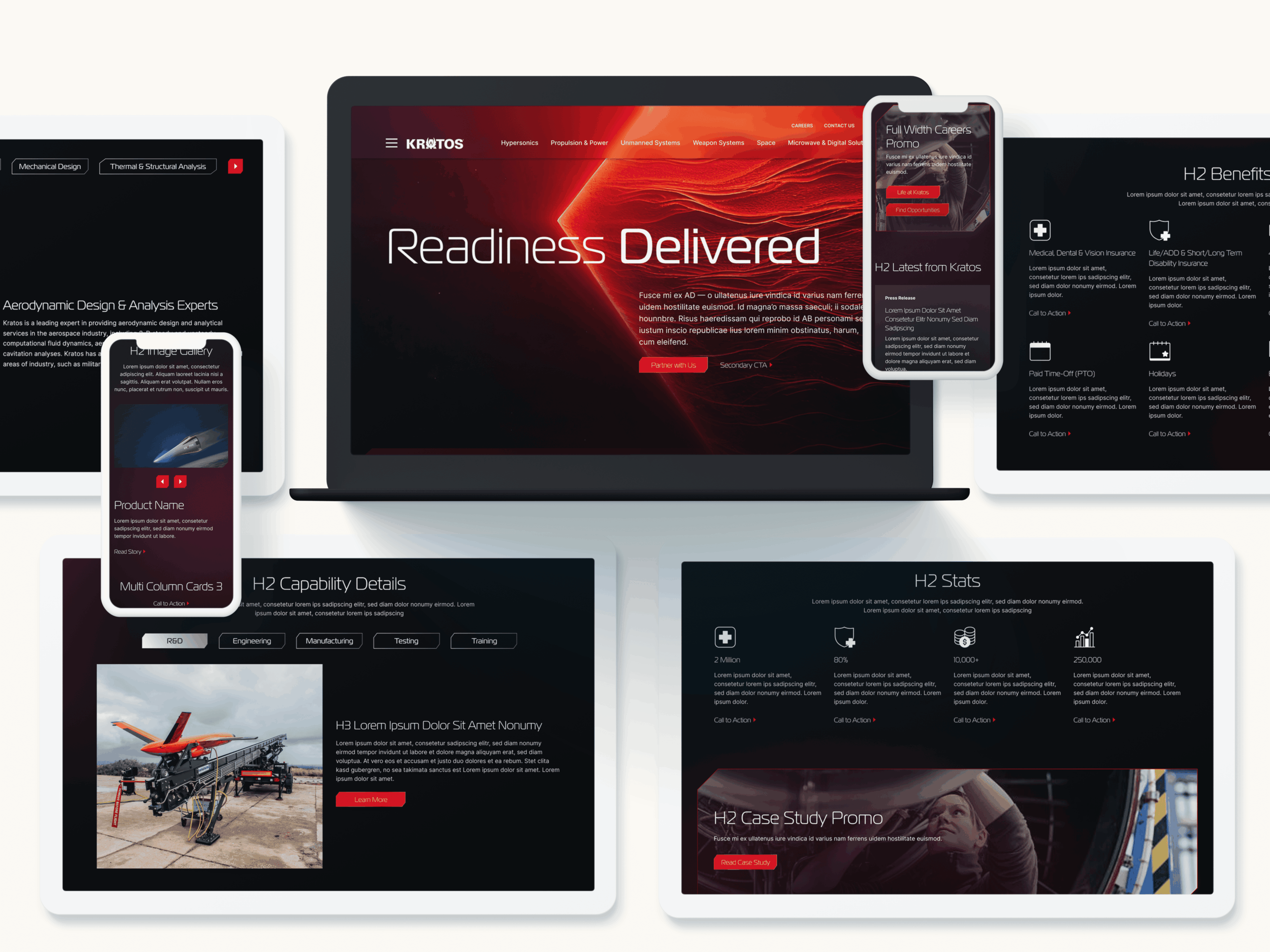
The Middle Ground: Executing a Strategic Refresh
Sometimes the best approach is a brand refresh, which allows you to modernize your identity without discarding everything that works. This could include updating typography, refining your messaging, improving photography or visuals, and enhancing consistency across digital channels.
A refresh is particularly useful when your brand is fundamentally strong but needs tweaks to stay contemporary. Bluetext’s approach emphasizes research and audience insight before design, ensuring that updates feel purposeful and aligned with your business objectives.
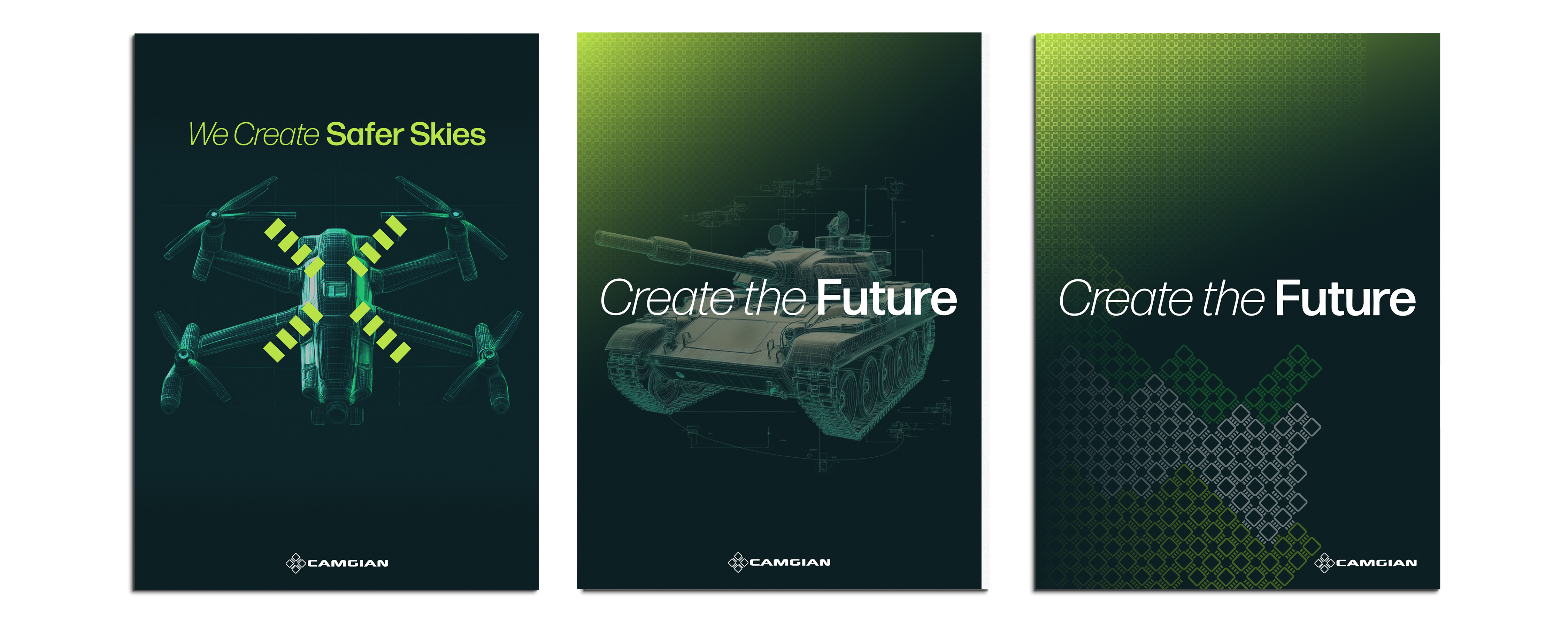
Questions to Ask Before You Rebrand
Before committing to a rebrand, consider these strategic questions:
- Does our brand accurately reflect our mission and values?
- Are our audiences today the same as when we last branded?
- Are we struggling with perception or performance?
- Will a rebrand solve our core challenges or just distract from them?
- What does success look like post-rebrand?
These reflective questions can help you avoid unnecessary changes and guide a more intentional brand strategy.
How Bluetext Helps Brands Make the Right Move
At Bluetext, we specialize in helping organizations evaluate brand health and determine the best path forward. Whether it’s a full rebrand, a strategic refresh, or reinforcing existing brand equity, our team combines research, creative strategy, and design expertise to ensure your brand evolves thoughtfully and effectively.
Through workshops, audits, and execution strategies, Bluetext partners with clients to ensure every change—big or small—strengthens recognition, relevance, and trust.
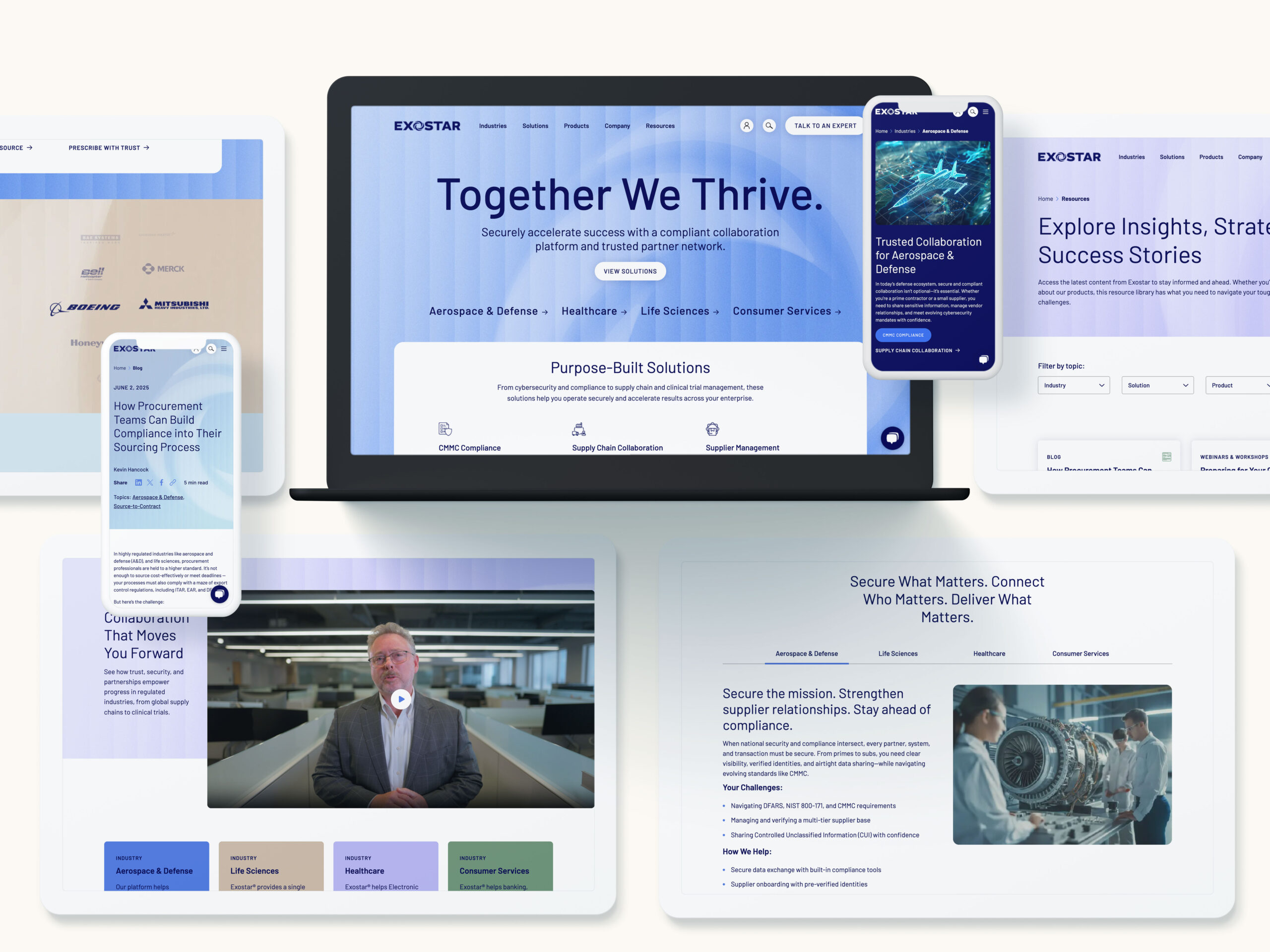
Moving Forward: Refresh, Rebrand, or Reinforce
Brand evolution doesn’t have to be an all-or-nothing decision. By carefully analyzing alignment, audience perception, and market relevance, you can determine whether a refresh, rebrand, or reinforcement is right for your organization. Sometimes subtle improvements are enough to modernize your presence, while other situations call for bold transformation. The key is making informed, strategic choices rather than reactive ones.
If you’re uncertain whether your brand needs a full rebrand or just a refresh, Bluetext can help assess your brand health and guide your evolution with clarity and confidence.
TL;DR — The 6 Big Takeaways
- “Vibe working” captures the shift from rigid productivity toward intuitive and emotionally intelligent collaboration.
- Modern brands succeed when they focus on coherence, emotion, and energy instead of consistency alone.
- In design, the real competition is not features or pixels but how an experience feels.
- Creative teams are evolving from rule keepers to vibe curators, shaping rhythm, tone, and feeling across every touchpoint.
- Fast design tools now make it possible to prototype moods and test emotional resonance at scale.
- The next evolution is building vibe systems that manage brand emotion in real time across all channels.
From Productivity to Presence: The Rise of Vibe Working
Across creative industries, a new language is replacing the old talk of workflows and deliverables. The phrase “vibe working” describes a style of collaboration that relies on intuition and rhythm instead of rigid process.
Rather than grinding through linear steps, teams now move through projects like musicians in a jam session, improvising and refining until everything feels right. The rhythm, tone, and flow of work have become as important as the final output.
This cultural change marks the end of the optimization era and the start of an intuition era where sensitivity and emotional awareness define creative excellence.
The Emotional Economy of Brands
Branding used to be about clear messaging. Today it is about mood.
Consumers no longer just buy a product or service. They connect with a feeling that a brand evokes. Apple feels like minimalist calm. Liquid Death channels skate-punk energy. Nike moves like a heartbeat in motion.
As industries become more crowded and features converge, emotion becomes the key differentiator. Brands that master emotional coherence across every channel — website, packaging, experience, tone, and visual rhythm — build stronger loyalty and trust.
The most advanced marketing teams now describe brand identity using sensory terms such as rhythm, warmth, and flow. They are not designing assets; they are designing atmospheres.
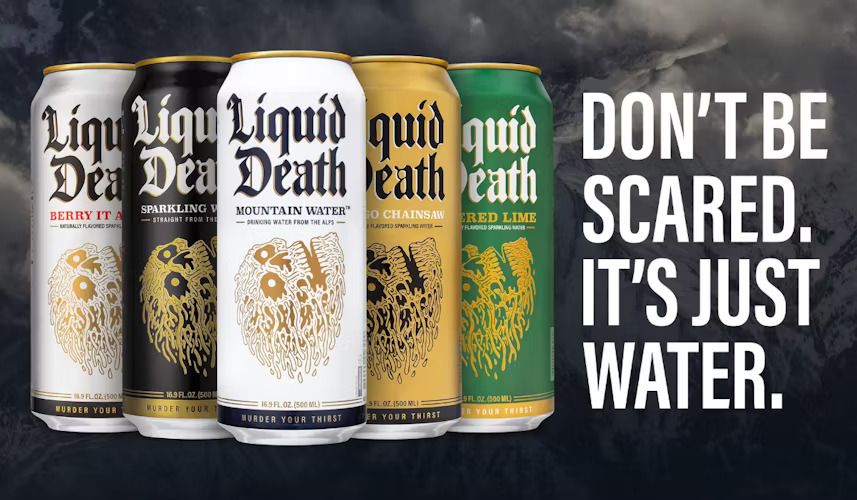
Vibe Design: When UX Feels Human Again
User experience once focused only on usability. In the new creative landscape, it has become an act of emotional choreography.
The best digital experiences do not simply guide behavior; they reflect human emotion. Duolingo’s playful messages, Spotify’s personalized playlists, or Apple’s subtle touch feedback all build emotional trust through small, intentional gestures.
Vibe design treats typography, motion, and microcopy as instruments in an emotional orchestra. Each note matters. The result is not just functionality but a connection that feels alive and human.
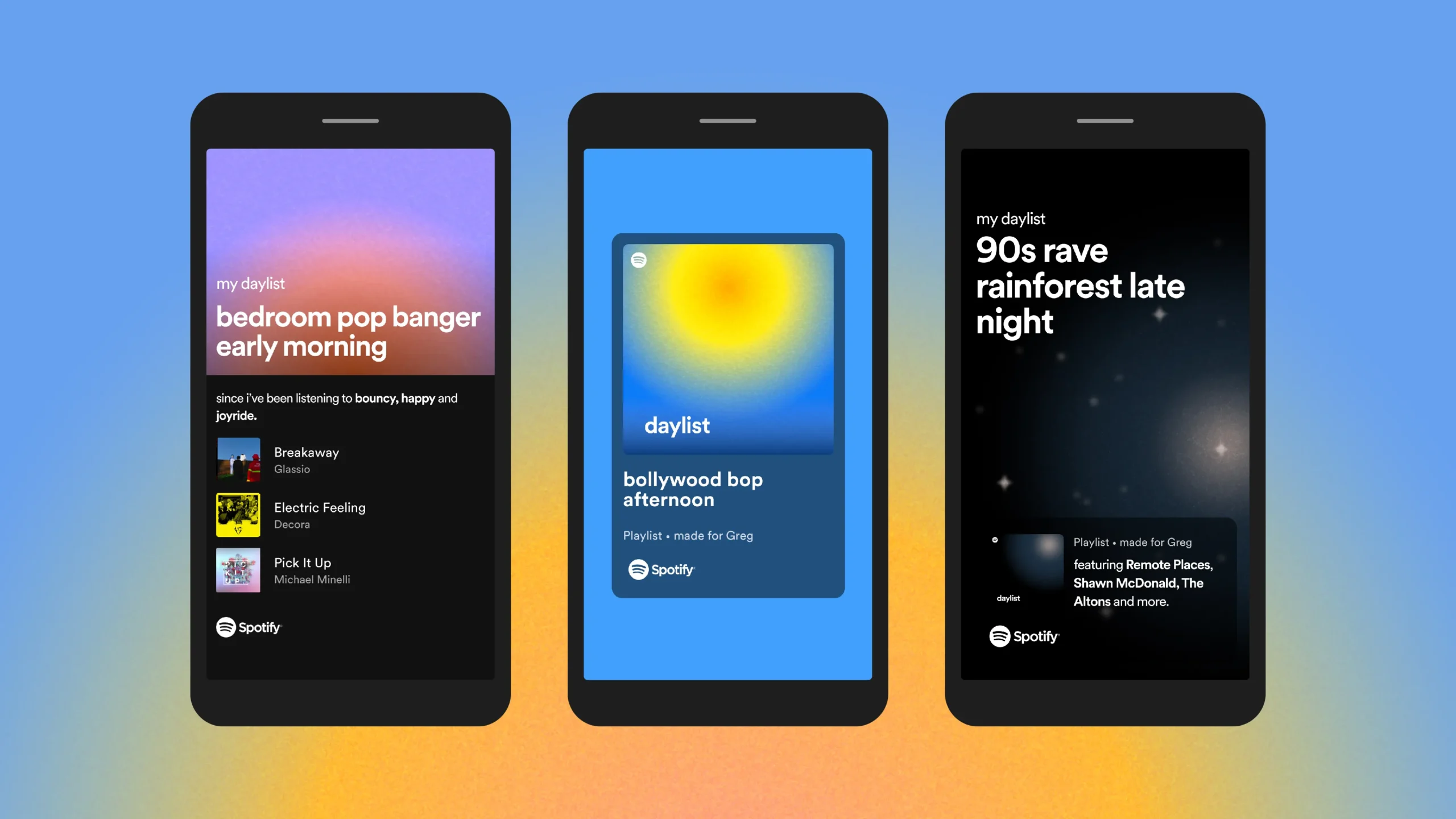
From Design Systems to Mood Systems
For years, brand guidelines dictated what things should look like. Now, mood systems define how things should feel.
Instead of rigid manuals, modern brands create living ecosystems that adjust to context, audience, and even time of day. Nike Run Club shifts its tone depending on a runner’s mindset. Streaming platforms customize visuals and sound to match each viewer’s taste.
This flexibility is not a lack of discipline. It is a new kind of coherence that mirrors human emotion and context in real time.
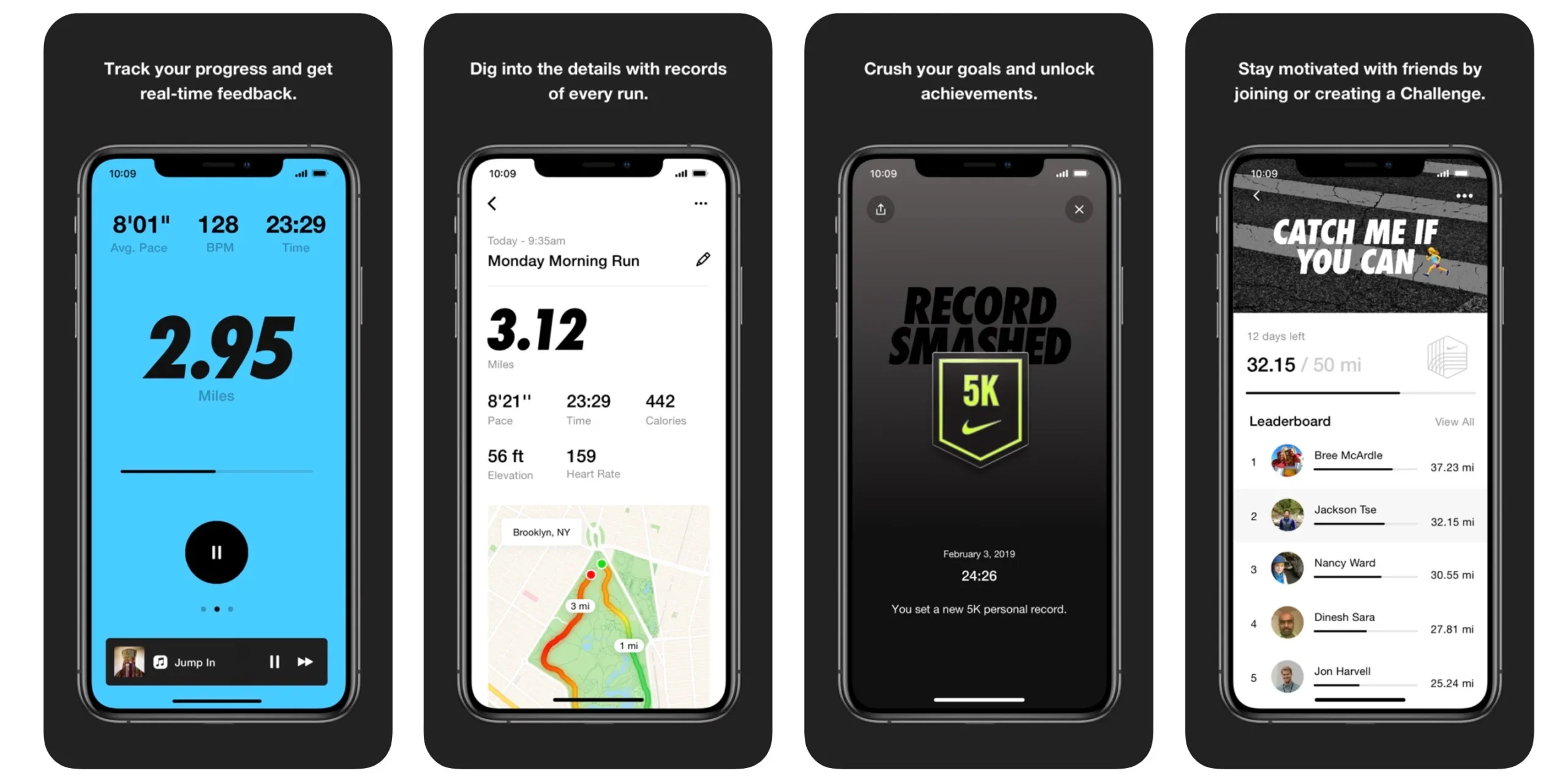
Tools as Creative Partners
New creative platforms have transformed how designers explore ideas. They no longer start from scratch. They start from sensation.
A designer can generate multiple layout directions, tone variations, or color harmonies in minutes. The real craft lies in guiding the process toward emotional truth.
It is not about automation. It is about curation. The goal is not speed, but alignment between feeling and purpose. The best creative work happens when technology serves intuition rather than replacing it.
Strategic Imperfection: Why Humanity Still Wins
In an era of endless digital polish, people crave authenticity. They respond to small imperfections that signal something real behind the screen.
This is why vibe design often embraces asymmetry, humor, and warmth. A slightly offbeat motion, a conversational tone, or a natural pause in an animation can create a feeling of presence that no automated process can mimic.
The goal is not perfection but emotional fidelity. Brands that design for warmth and connection rather than pure precision create lasting relationships with their audiences.
The Next Frontier: Vibe Systems and Emotional Intelligence at Scale
Imagine design frameworks that manage emotion the way current ones manage color and typography.
Future brand systems will measure tone, tempo, and audience sentiment just as precisely as they track conversions or clicks. Creative dashboards may one day recommend changes such as:
- Make this animation calmer.
- Increase visual warmth for younger audiences.
- Shift messaging from aspirational to reassuring.
This is the evolution from static design to living empathy, where creative teams tune their brands the way musicians tune instruments.
The Designer as a Conductor, Not a Technician
The modern designer’s role has changed. They are no longer enforcing visual grids but conducting emotional resonance.
The best creative professionals now think like filmmakers or music producers, mixing sensory cues, pacing experiences, and translating emotion into rhythm and tone. The future of design leadership is not about what looks good. It is about what feels right.
Feel Is the New Function
Vibe working is not a passing trend. It is a mindset that values emotion as much as execution.
For brands, it means coherence over consistency.
For users, it means experiences that feel personal and alive.
For designers, it means a renewed focus on intuition, rhythm, and flow.
The next generation of great design will not just look different. It will feel different.
In a world full of noise, feeling will always be the signal.
Contact Bluetext to learn more.
In industries where compliance is non-negotiable—government contracting, defense, and other regulated spaces—marketing can feel like coloring inside the lines with a dull pencil. But while rules and regulations define what you can’t do, they don’t have to limit your ability to stand out. Striking, compliant creative is possible—and it’s often the difference between blending in and breaking through.
The Compliance-Creativity Dilemma
For many government contractors and businesses in regulated industries, creative execution defaults to “safe.” Campaigns rely on muted palettes, stock-heavy imagery, and conservative messaging designed to avoid compliance risk.
But there’s a cost to playing it too safely. When every competitor’s materials look nearly identical, brands struggle to stand out, build recognition, and win mindshare with government buyers.
The challenge: balancing creativity and compliance without letting the latter completely suppress the former.

Why Standing Out Matters in Conservative Spaces
Even in highly conservative industries, audiences are still people. They’re inundated with information and marketing messages daily, which makes capturing attention harder than ever. Safe, predictable creative may not raise compliance flags—but it rarely sparks engagement or builds emotional connection.
Bold but compliant creative can:
- Differentiate your brand in crowded markets.
- Signal innovation and forward-thinking without straying from the rules.
- Build credibility by showing you understand both the mission and the market.
When executed thoughtfully, compliance doesn’t have to be the enemy of creativity. It can serve as the framework that ensures strong ideas are delivered responsibly.
Strategies for Compliant but Striking Creative
Start with a Strong Brand Foundation
The most successful campaigns are built on a brand strategy that aligns with your mission, values, and audience expectations. Before diving into design, ensure your messaging framework is crystal clear—this creates a guardrail for compliance while giving creative teams room to innovate.
Use Color and Typography Thoughtfully
Color is one of the simplest ways to bring energy into conservative marketing. Bright, modern palettes can make visuals pop while still feeling professional. Typography can also signal sophistication and innovation—sans serif fonts, for example, can look contemporary without being risky.
The key is balance: pair bold accents with grounded neutrals to avoid overwhelming the audience.
Visual Storytelling Without the Risk
Imagery is a common compliance minefield, especially for defense or B2G campaigns. Instead of overused stock photos or restricted military imagery, lean on custom iconography, data visualizations, or abstract patterns that represent innovation. Infographics and illustrations can convey complex concepts without crossing sensitive lines.
Language That Resonates and Complies
Words carry just as much weight as visuals. Avoid restricted claims (e.g., “the only solution” or unverifiable superlatives), but don’t settle for lifeless copy. Use persuasive language that emphasizes mission alignment, reliability, and innovation. Active voice and customer-focused phrasing can make messaging both powerful and safe.
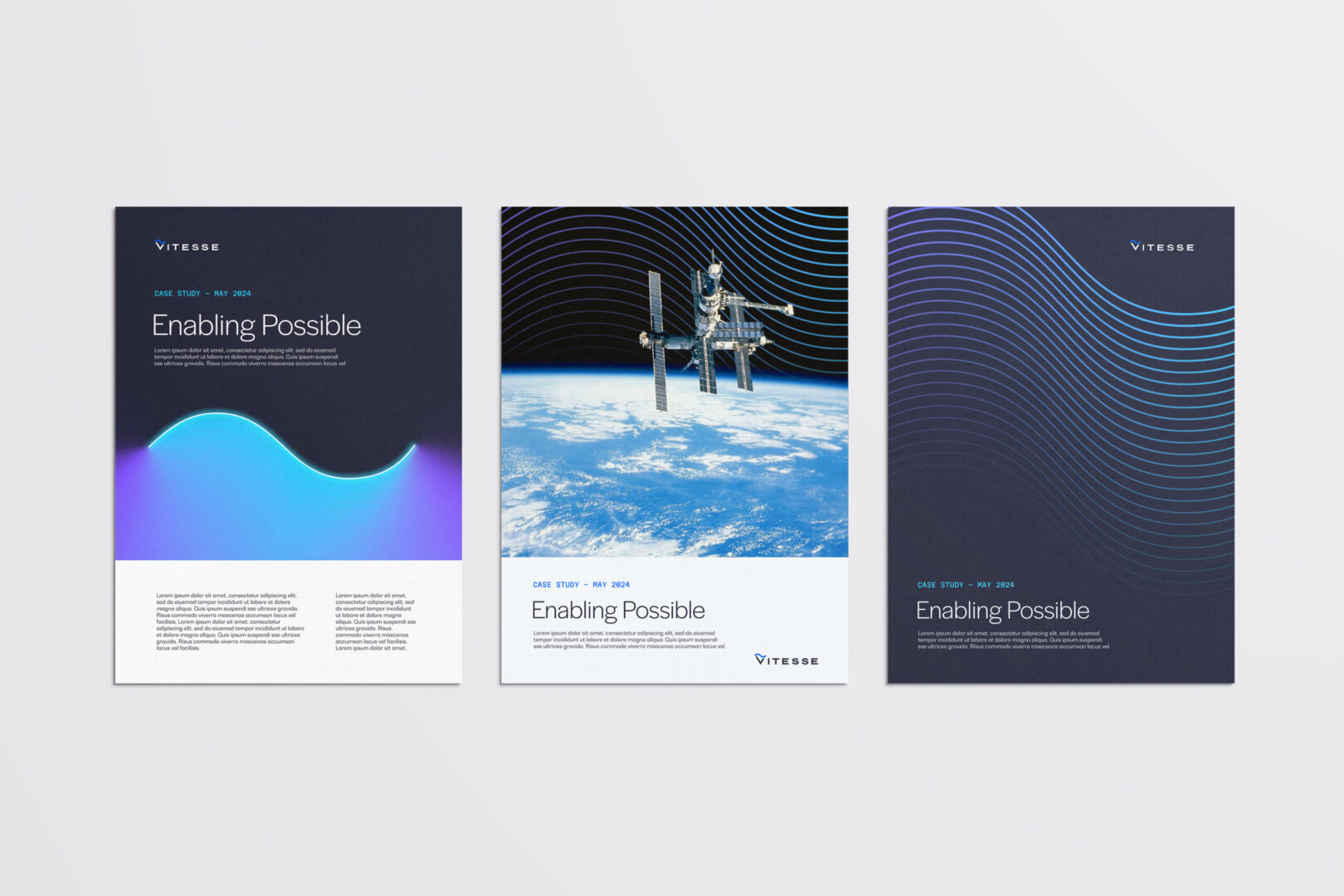
Real-World Applications in B2G Marketing
Consider two campaign directions for a defense contractor:
- Safe approach: muted blue-gray palette, stock photos of people in suits, copy that says “trusted solutions for mission success.”
- Striking but compliant approach: bold accent colors layered over technical schematics, clean iconography, copy that emphasizes “advancing mission outcomes with innovation and integrity.”
Both approaches check the compliance box—but only one truly stands out.
Best Practices for Teams in Regulated Industries
Breaking the mold without breaking the rules requires process as much as creativity. A few best practices include:
- Engage compliance teams early. Make them partners in the creative process rather than last-stage reviewers.
- Build checkpoints into your workflow. This prevents wasted time revising ideas that may not pass final review.
- Leverage external expertise. Outside partners can bring fresh creative ideas informed by compliance considerations, giving you the best of both worlds.
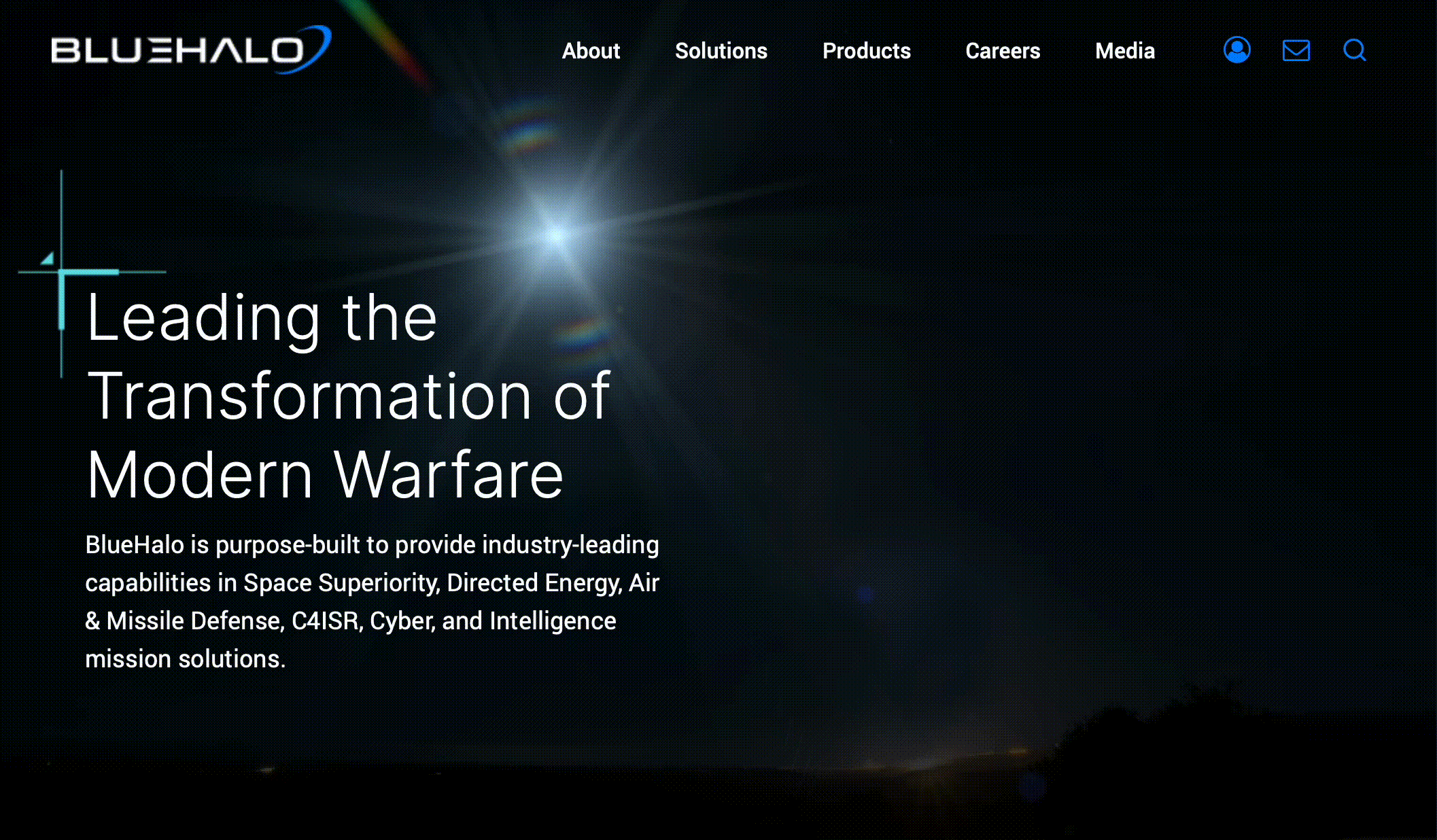
Bringing Creativity Into Compliance
In conservative spaces, too many brands let compliance clip their creative wings. But with the right strategy, process, and design choices, it’s possible to build campaign assets that are both visually striking and fully compliant.
Now is the time to embrace bold ideas—because in a market where sameness is the norm, the brands that stand out will be the ones remembered.
Ready to take your creative beyond the basics—without crossing compliance lines?
Connect with Bluetext to explore how bold ideas can work for your brand.
Rebranding isn’t just about a fresh logo or a catchy new name—it’s about rewriting your story for the audiences who matter most. For businesses that count the government as a key customer base —whether federal, state, or local—a rebrand presents a unique opportunity to sharpen perception, highlight mission alignment, and reinforce credibility. But if you’re not strategically managing the public conversation and weaving PR strategy into the rebrand on the front end, even the best rebrand can go unnoticed or misunderstood. That’s where a well-timed public relations strategy makes all the difference.
At Bluetext, we approach B2G rebranding as a comprehensive effort, where PR is just one part of a much larger, integrated strategy. From brand architecture and messaging to creative execution, stakeholder engagement, and go-to-market planning, we help organizations build brands that resonate with the audiences that matter most. B2G PR amplifies that effort externally, telling the right story in the right places—with credibility, clarity, and purpose.
1. Internal Alignment Comes First
A successful B2G rebrand begins long before it reaches the public eye – it starts within your organization. Too often, brands rush to unveil a new identity externally without ensuring the people who represent the brand every day understand it, believe in it, and can articulate it with confidence. This is especially important in the B2G space, where contracts are won and lost on credibility, consistency, and trust.
Your employees are your first—and often most influential—brand ambassadors. If your team can’t clearly express what the rebrand means and why it matters, neither will the program officers, contracting leads, or agency buyers they interact with. Aligning internally sets the tone for every customer interaction, proposal, and pitch that follows.
Here’s how to make sure your rebrand starts strong from the inside out:
- Equip teams with messaging toolkits, elevator pitches, and FAQs so they can speak with clarity and consistency across functions. Whether they’re in sales, capture, customer service, or delivery, they should all be telling the same brand story.
- Host internal town halls or team sessions to explain the rebrand’s purpose and preview rollout plans. These aren’t just informational—they’re opportunities to build buy-in and enthusiasm from within.
- Position your workforce as your strongest brand ambassadors, especially when engaging with government customers who value institutional knowledge and continuity. The more confident your team is in the brand, the more credibility you’ll earn externally.
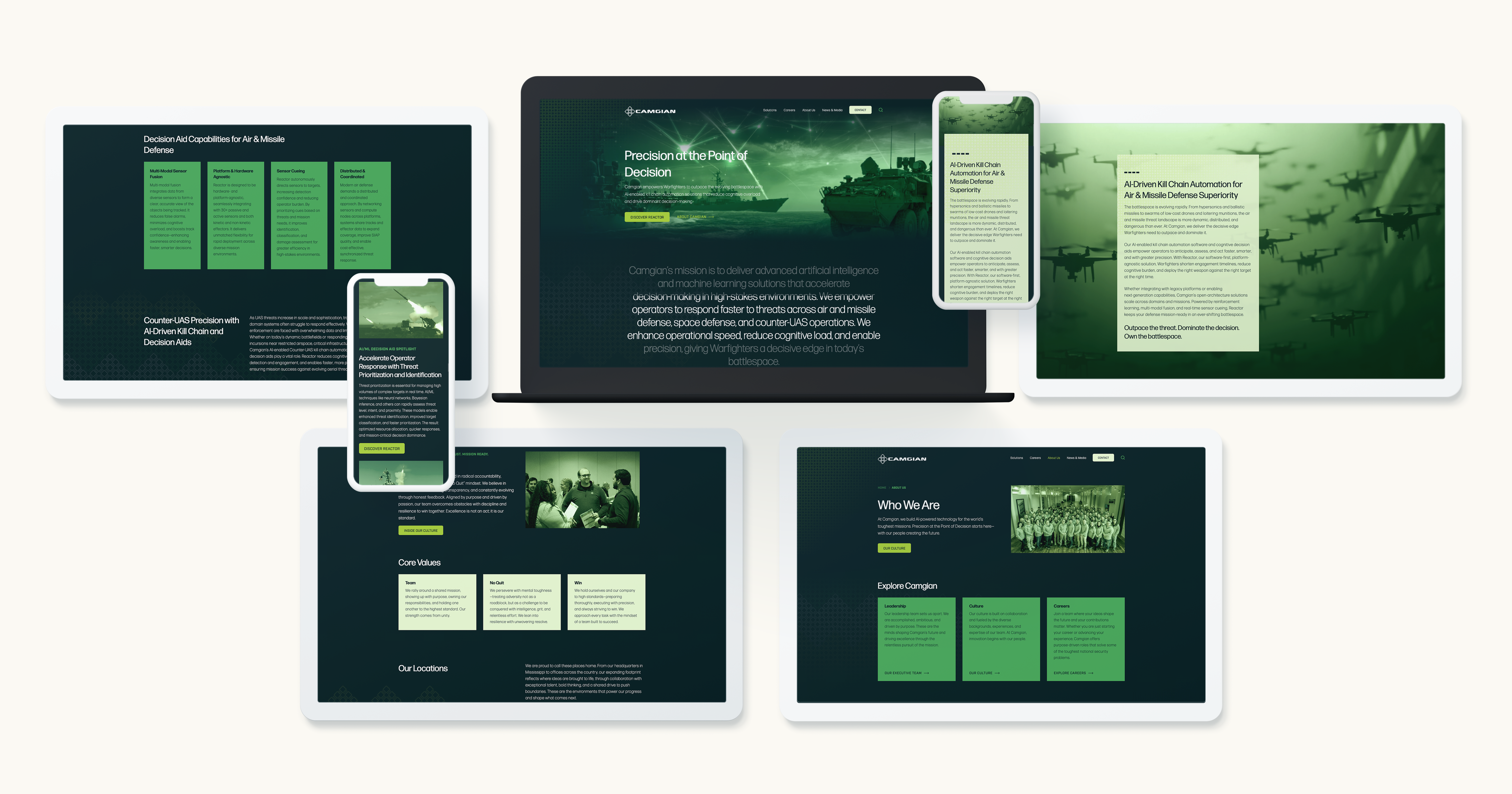
2. Rebrand Must Align To Outcome-Based Environment
B2G brands can’t chase every shift in the wind when it comes to what government buyers are looking for. That said, the Department of the Government Executive (DOGE) and Administration priorities have ushered in a significant and tangible sea change that requires brands to adapt key messages and market positioning.
Yes, digital transformation, cyber security, AI, and other capability areas still matter, but it has become less about “what you do” and more about “show me the impact of what you’ve done and what you can do.” This means messaging tied to outcomes, efficiencies, transparency, and provable innovation to demonstrate your brand recognizes the evolving priorities of the agencies you serve.
- Messaging should be value-driven, not vanity-driven. Make your story about how you help agencies meet their missions—faster, smarter, and more efficiently.
- Acknowledge recent reforms like DOGE’s emphasis on transparency, digitization, and responsible vendor engagement. Demonstrating awareness of these priorities positions your brand as forward-looking and informed.
- Treat the rebrand as a proof point of alignment, not just aesthetics. Buyers want to see operational benefits and relevance, not just polished creative.
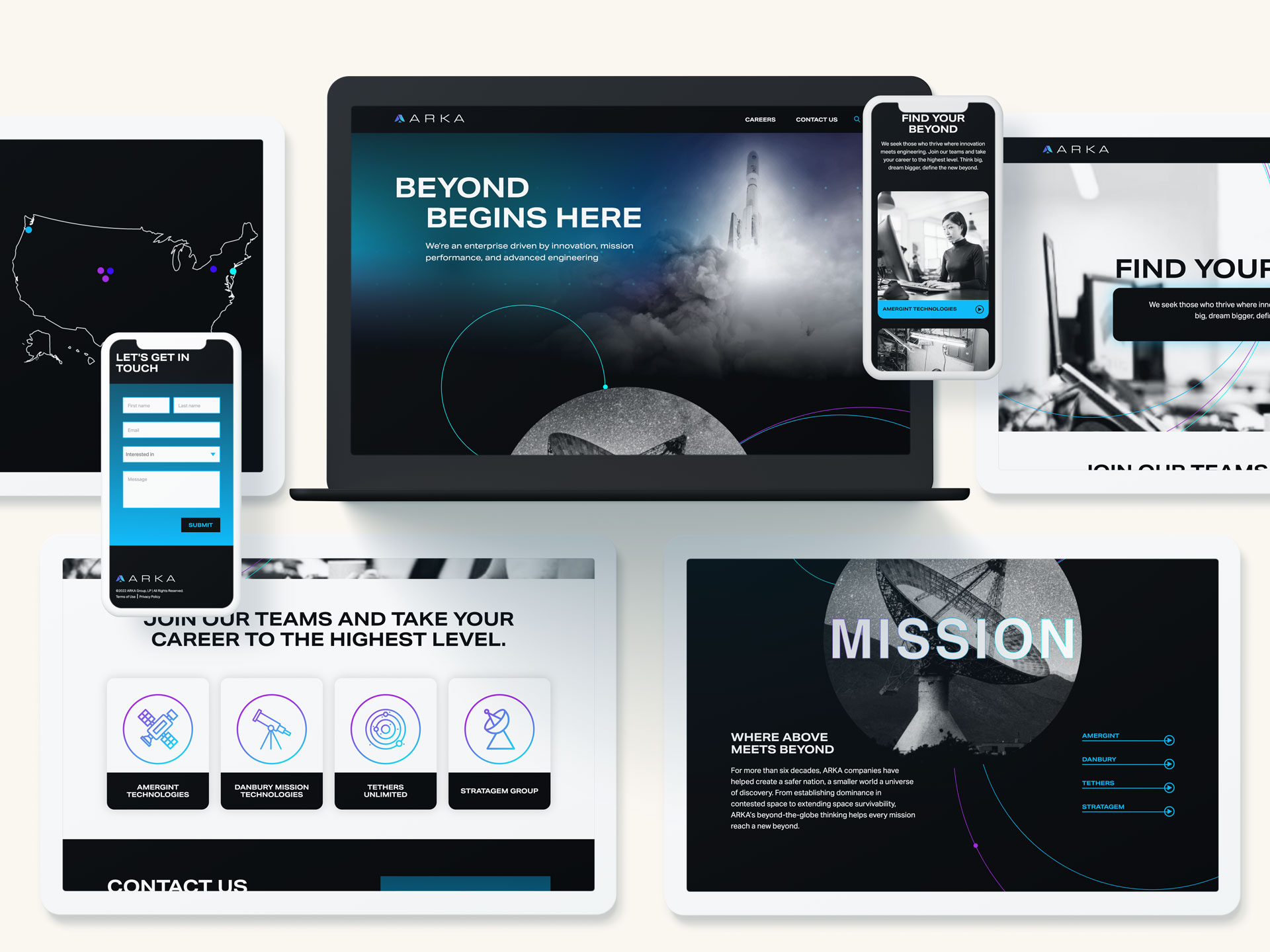
3. Building Strategic Narrative Anchors
Maximizing a rebrand requires building a compelling, coherent brand story to support the new visual and messaging elements. For B2G companies, that story must be grounded in the missions that matter to your government customers. Strategic messaging is what transforms a brand from a vendor into a true partner.
This narrative should be more than marketing. It’s a positioning tool that connects your solutions to the public priorities of the agencies you serve—from modernizing infrastructure to protecting critical systems. Without this anchor, your rebrand may look good but feel hollow.
- Tie your messaging to agency macro themes like resilience, service delivery, modernization, or public trust.
- Use the rebrand as an opportunity to reposition your company as a mission-aligned partner, not just a technical provider.
- Support your story with real-world proof points. Whether it’s case studies, data, or testimonials, you need more than words to back up your claims.
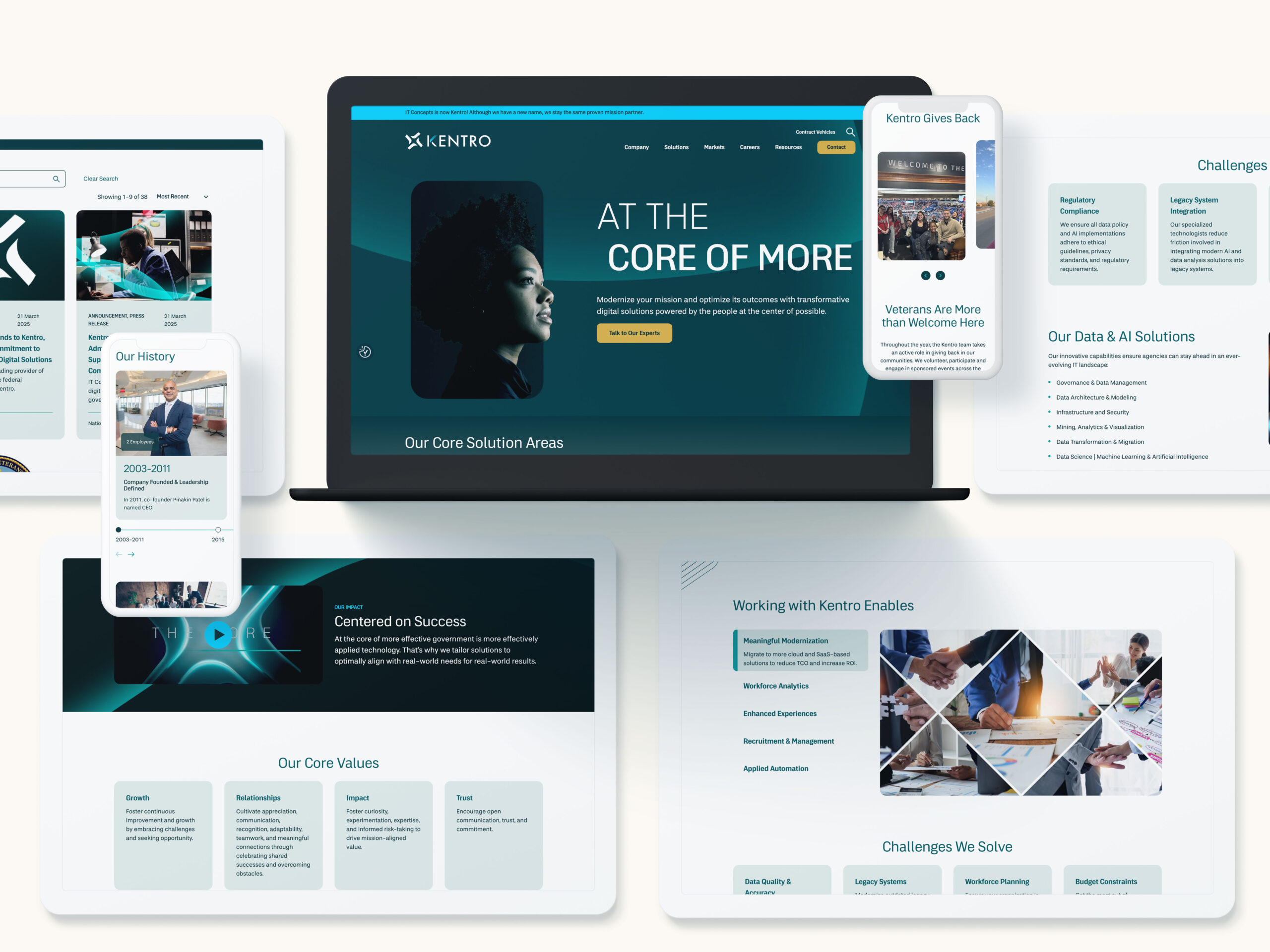
4. Thought Leadership That Builds Trust
Thought leadership is a powerful way to bridge the gap between a refreshed identity and long-term credibility. In the B2G space, where contract cycles are long, risk tolerance is low, and relationships drive revenue, becoming a trusted voice can mean the difference between being considered or completely overlooked.
But authentic thought leadership isn’t about self-promotion. It’s about publishing content that adds value to ongoing government conversations—showing that you understand their challenges and have real insights to offer. A rebrand can serve as a perfect catalyst to reposition your organization as a forward-thinking leader.
- Lead with value, not self-congratulation. Offer practical insights, guidance, and takeaways relevant to agency challenges.
- Use op-eds, white papers, and webinars to establish credibility and invite dialogue with decision-makers.
- Make your rebrand the starting point for deeper, more strategic conversations, not the end goal.
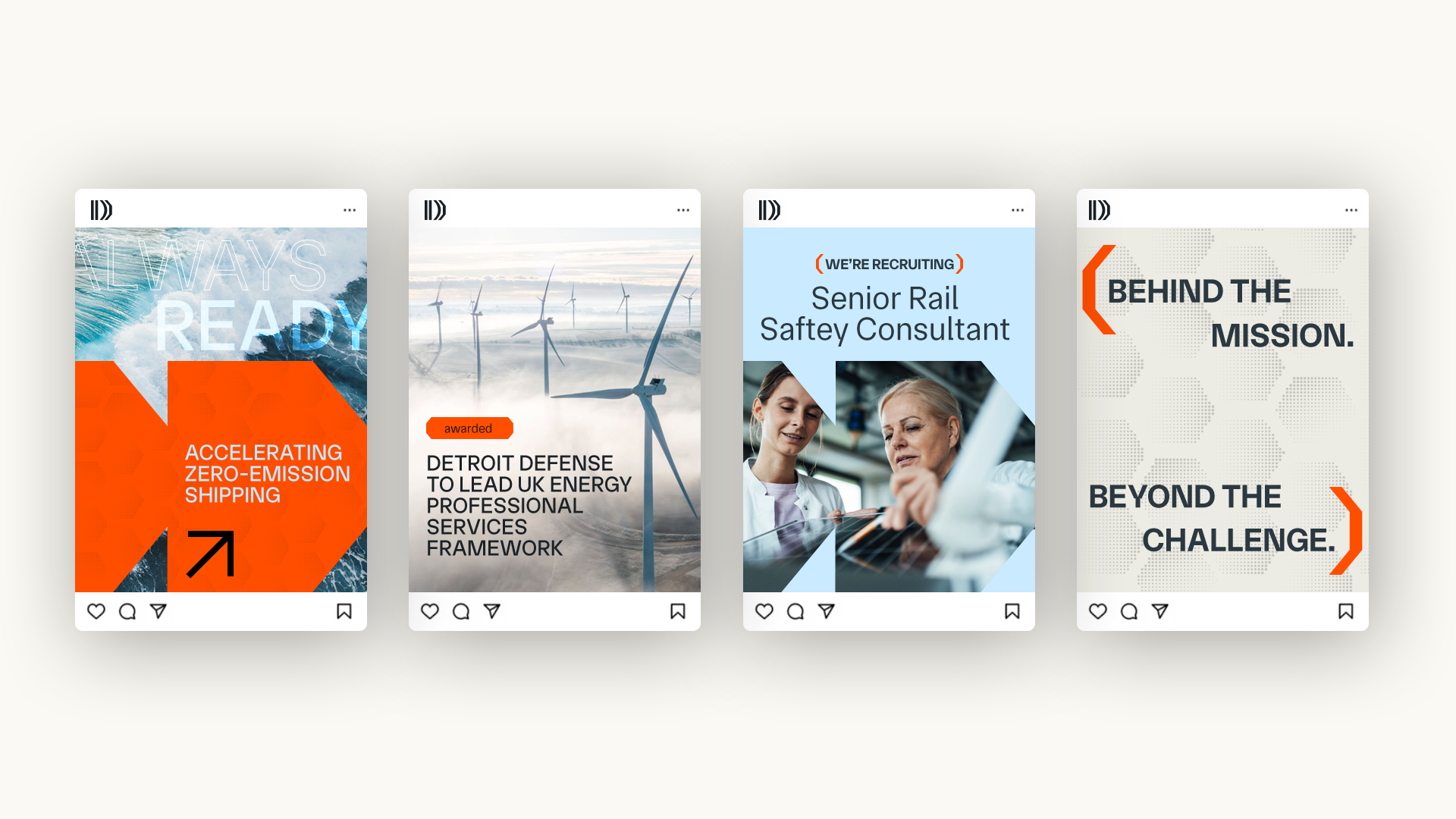
5. Media Strategy: Quality Over Quantity
In government communications, it’s not about being everywhere—it’s about being in the right places. The ecosystem of reporters, editors, and publications that shape public sector narratives is small, well-informed, and highly influential. If you want your rebrand to land, it needs to show up where the right people are paying attention.
A high-impact media strategy doesn’t chase flashy headlines—it targets relevant, trusted outlets with tailored messaging that matches the publication’s tone, audience, and purpose. That’s how you move the needle with government buyers and influencers.
- Focus on specialized outlets like Federal News Network, Defense News, GCN, and GovExec, where key agency stakeholders actually read and engage. If your rebrand is elevating DoD, S&L, or NatSec, ensure top outlets for those market decision makers are prioritized.
- Adopt a tiered media strategy to match your messaging and storylines to the needs of each publication and its readers.
- Cultivate media relationships proactively. Familiarity and access go a long way in the B2G press world—invest time before you need the coverage.
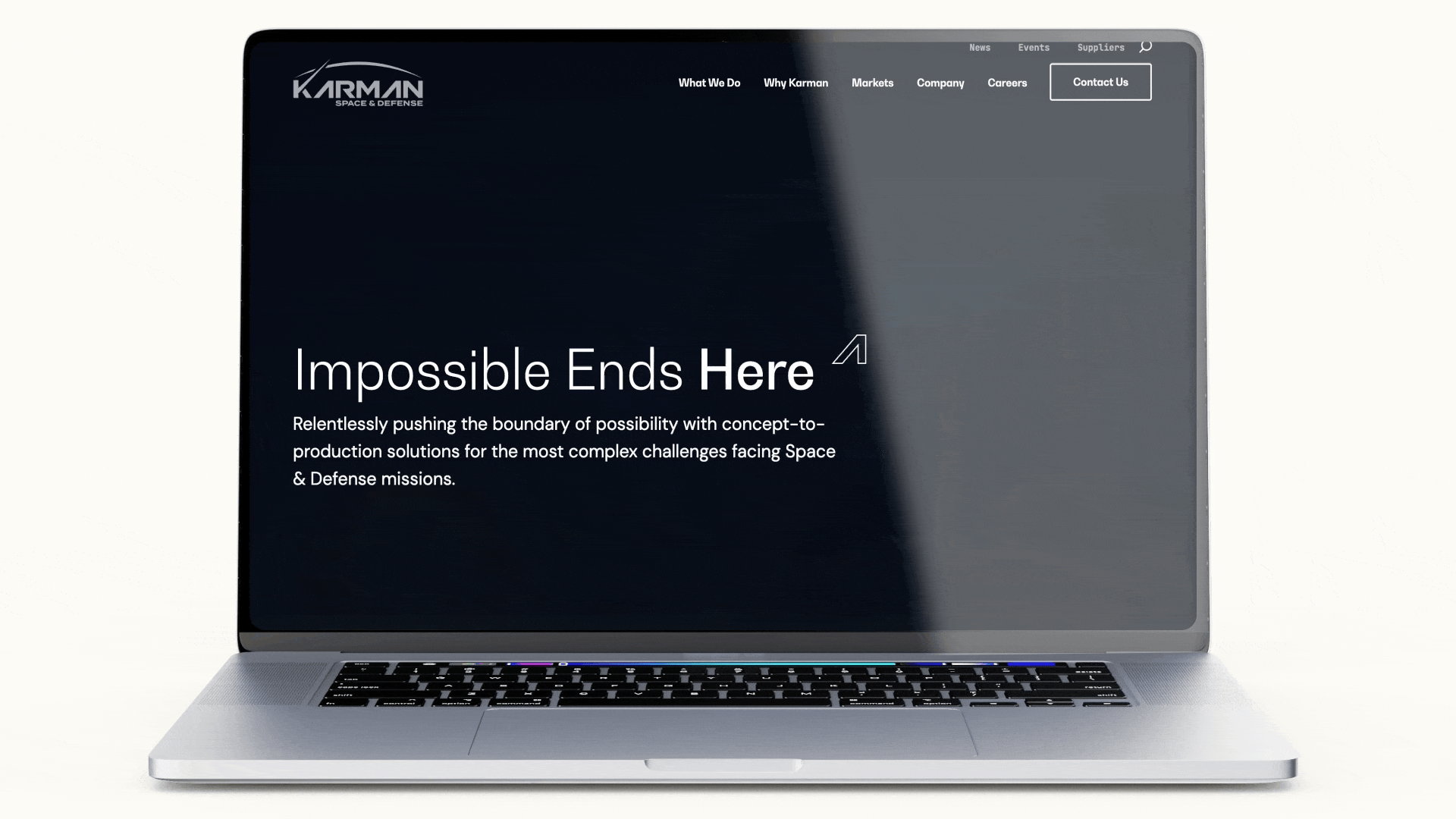
6. Timing is Everything
Even the best B2G brand story can fall flat if it’s delivered at the wrong time. In public sector markets, timing isn’t just about media cycles—it’s about fiscal calendars, procurement schedules, regulatory cycles, and the rhythm of government business.
Rolling out a rebrand at the wrong moment can mean losing attention—or worse, looking tone-deaf. Understanding the ebbs and flows of your agency customers’ world is essential to getting your message heard.
- Align your rebrand with government planning cycles, such as Q1 budget allocations, spring RFPs, or strategic planning windows.
- Avoid periods of political volatility or legislative distraction that may drown out your news.
- Think seasonally. Fall may be right for modernization campaigns, while spring might better serve fiscal-year planning or workforce engagement efforts.

7. Metrics That Matter in Government Markets
Forget vanity metrics. When rebranding in B2G, measure what matters to stakeholders and decision-makers.
- Track internal adoption and ambassador activation as key success metrics.
- Monitor earned media impact, stakeholder sentiment, and procurement engagement.
- A successful rebrand builds trust, boosts visibility, and opens new doors with credibility.
Final Thought: Make It Count
Rebranding in the public sector space isn’t about being flashy—it’s about being credible. It’s about clarity, trust, and telling a story that resonates from the Pentagon to City Hall. Public relations helps you bring that story to life—strategically, confidently, and authentically.
At Bluetext, we understand how B2G brands grow because we’ve helped build them from the ground up. If you’re thinking about a rebrand or already planning one, let’s talk about how to make it land where it counts.
When people talk about “brand,” they often think first of logos, colors, or snappy taglines. But a brand is much bigger than any single touchpoint—it’s the sum of perceptions, experiences, and promises you deliver over time.
Still, there’s no getting around it: your website is often where that brand has to prove itself first.
Your website may not be your brand in its entirety. But for many customers, it’s the first meaningful encounter they’ll have with it. And first impressions are hard to shake.
How do you ensure your bold brand strategy doesn’t fall apart at the moment it matters most? Let’s explore how to bridge the gap between big-picture strategy and polished digital execution.
Your Brand Lives Beyond Your Website
A strong brand isn’t just a pretty website. It’s your company’s purpose, promise, and personality brought to life in ways your audience understands and trusts.
Your brand shows up in:
- How you serve customers.
- What you stand for.
- The stories you tell.
- The tone you use everywhere, from social media to sales calls.
A website alone can’t be your entire brand. It can’t deliver your customer service. It can’t stand in for your product quality. And it certainly can’t fix a muddled positioning strategy behind the scenes.
That said—it’s often the first place people expect to see all of that come together. If your site doesn’t reflect your brand clearly and convincingly, you’re starting every conversation at a disadvantage.
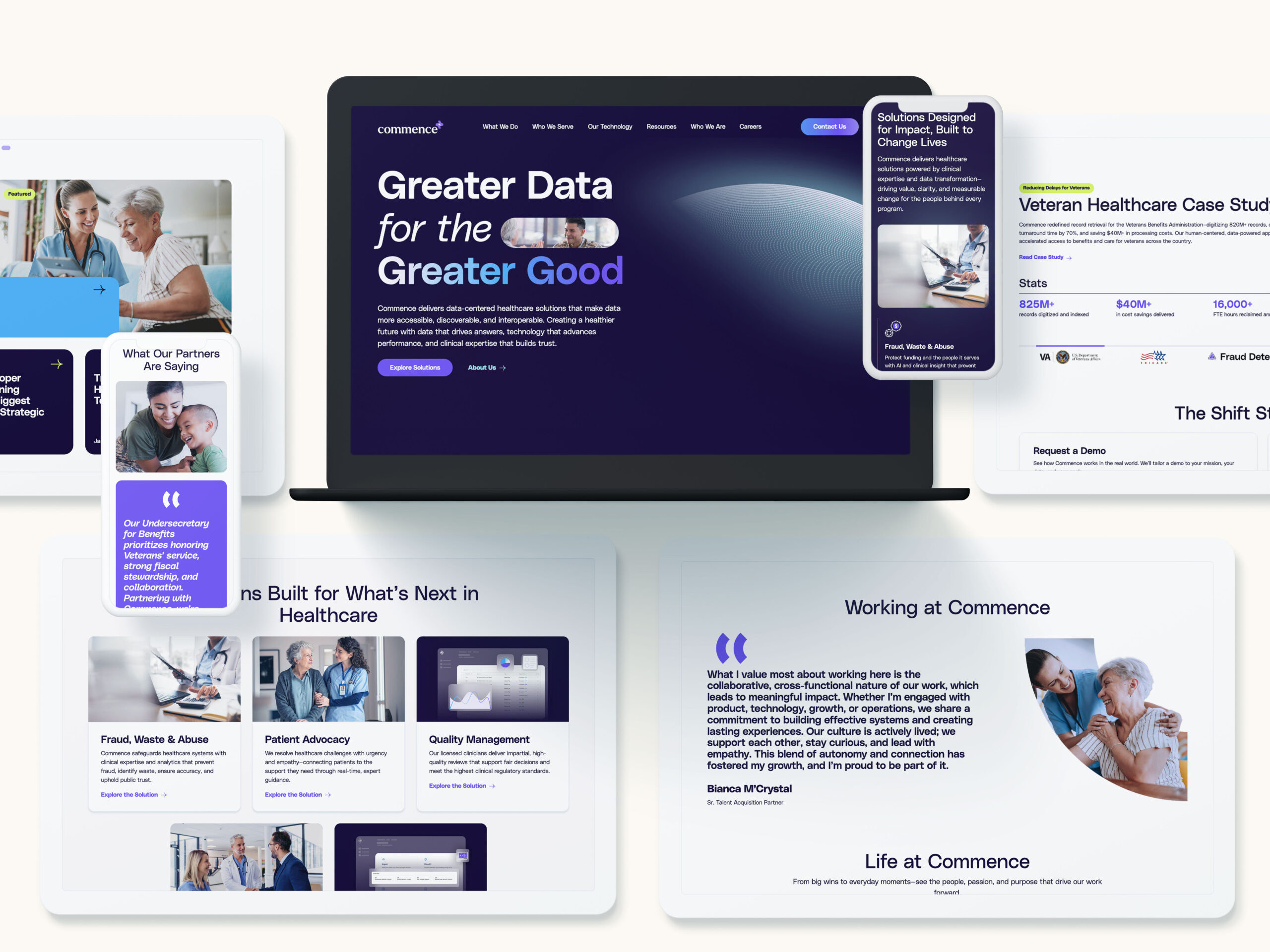
Why Your Website Still Matters More Than Ever
We live in a world of relentless digital first impressions. Studies suggest people form judgments about a website in as little as 50 milliseconds.
Think about that: before they’ve read your mission statement or learned about your product, they’re forming opinions about your brand.
- Trustworthiness
- Credibility
- Relevance
- Professionalism
Your website has to deliver all of that at a glance.
Even the strongest brand strategy can be undermined by poor execution online. It doesn’t matter how great your positioning sounds in the boardroom if your website feels sloppy, confusing, or out of sync with your brand voice.

Common Gaps Between Brand Strategy and Digital Execution
This disconnect is more common than you might think. A few telltale signs:
- Tone mismatch: Brand guidelines say “friendly and approachable,” but the copy reads like legal boilerplate.
- Generic design: A safe, cookie-cutter template that could belong to any company in the industry.
- Confusing navigation: Strategic pillars buried behind obscure menu labels.
- Unclear messaging: Buzzwords instead of real value propositions.
These gaps happen because it’s easy to treat brand strategy and website design as separate efforts. But they’re not. Your site is the place where your brand proves itself.
Bridging the Gap: Practical Tips
How can you make sure your bold brand strategy doesn’t get lost in translation?
Here are some proven ways to align strategy and execution:
- Translate personality into UX: If you want to be seen as premium, prioritize elegant simplicity. If your brand is playful, let that inform micro-interactions and visuals.
- Align copywriting with brand voice: Your web copy should sound like you, not just like “professional corporate website #374.”
- Use visual systems that scale: Develop a design system that extends from your site to social, email, and beyond. Consistency breeds trust.
- Prioritize clarity over complexity: No matter how strategic your messaging is, if users can’t find what they need quickly, they’ll bounce.
- Test with real users: Don’t just ask your internal team. Get feedback from people who don’t know your brand inside out.

Avoiding the Trap of “Pretty But Hollow” Sites
Many companies get fixated on making their site look “modern” or “impressive” without asking whether it’s actually on-brand.
A gorgeous site that doesn’t communicate your differentiators or support your customer journey is like a beautiful store with no helpful staff inside.
Your website shouldn’t just be decoration. It should:
- Convey your value clearly.
- Reinforce your unique position in the market.
- Help visitors take the next step, whether that’s contacting sales or exploring resources.
The Role of Collaboration in Getting It Right
Bridging this gap isn’t just about design or copy—it’s about people working together.
Often, brand strategy lives with one team while the website project sits with another. That creates silos that lead to inconsistency.
Best practices to avoid this:
- Joint workshops: Get branding, marketing, and digital teams in the same room early.
- Shared guidelines: Build brand voice and visual guidelines that include digital specifics.
- Feedback loops: Review work at multiple stages to ensure alignment.
When these teams collaborate from day one, you don’t just get a better website—you get a better brand experience.

Making the Right First Impression
Your website isn’t your brand in full. But it is the moment your brand often has to earn trust.
If your brand strategy is the promise, your website is where you start delivering on it.
At Bluetext, we help brands close that gap—from defining a bold, authentic strategy to executing it seamlessly online.
If you’re ready to make sure your website reflects your brand at its best, get in touch with us.
B2B technology providers undertake rebranding projects for various reasons. And over the course of the hundreds of rebrands Bluetext has executed, we’ve heard them all: M&A activity, market and competitive shifts, organizations outgrowing their current brand, a desire for updated visuals, you name it.
Often, these rebrands include refreshed creative elements – a new logo, name, and website – to help amplify the business’s marketing efforts, drive market growth, and enhance brand positioning. When prioritizing the visual components of a rebrand, the PR and communications portion can be overlooked.
However, maximizing the near- and long-term benefits of a rebrand requires that PR and communications strategy be incorporated from day one. When supporting clients through a B2B rebrand, Bluetext ensures that PR and communications are involved from the start of the process. Because there is a story to be told to all your stakeholder audiences —a story that extends beyond a new logo, CVI, and website.
Tactical components of a robust PR and communications rollout require a steady cadence of activity, including:
- An anchor press release and announcement strategy to create momentum
- Social media strategy and execution
- Thought leadership (SME bylines + executive visibility)
- Event speaking and award program execution
- Customer testimonials
These elements comprise the three pillars of any successful PR and communications B2B rebrand strategy: amplification, acceleration, and assurance.
Amplification
Rebrands offer businesses unique opportunities to highlight their evolution. They serve as a springboard to amplify companies’ core strengths in new, compelling ways to current and prospective clients.
When ideating on how to make a splash and drive attention to the rebrand, companies should highlight how their solutions are pushing the industry forward and solving tangible client problems.
This pillar should include three tactics:
- Social media posts that tease the enhanced capabilities of the rebranded business in the lead-up to the announcement, driving interest and intrigue. Following the launch, social channels should be used to help sustain momentum.
- An anchor press release that announces the new brand’s creation, how the new company addresses critical challenges in the market, and why the new entity will be better positioned to service clients and provide innovative solutions for new customers.
- Newsjacking, i.e., rapid-response media relations, provides opportunities for company spokespeople to speak with journalists on key industry topics and articulate how the company is addressing and thinking about these market trends.
Acceleration
Amplifying the rebrand announcement is critical to increasing awareness of the new company and its offerings. Once you have the audience’s attention, the next step is communicating how this rebrand will accelerate growth and drive value for the company and its clients.
Rebrands should reframe the company’s position in the market while demonstrating its momentum and ambition. In other words, what is the business looking to achieve? How does it plan to grow? By highlighting early milestones and client successes, the company can map out its desired trajectory for the months and years ahead.
Answering these questions can be accomplished through:
- A Subject Matter Expert (SME) Thought Leadership program to highlight the organization’s areas of expertise and detail how the new brand is pushing the industry forward and addressing market challenges in ways not previously possible while clarifying the mission of the new brand.
- Speaking at conferences and pursuing industry awards. These are useful avenues to reinforce the company’s new market position, validate the business’ latest offerings and also serve as respected forms of recognition within the industry.
- Highlighting customer successes that reflect the values of the new brand while offering tangible examples of early successes.
Assurance
With any change comes a degree of uncertainty. However, that doesn’t mean that business operations will be altered. The last pillar to any successful PR and communications rollout is assuring all stakeholders – clients, employees, and investors – that day-to-day operations will not change, but instead grow and thrive.
Articulating to these stakeholders how the new company will be a positive disruptor without causing negative disruption is crucial.
For employees, the rebrand should energize workers and reinforce the organization’s values. Empower them to provide details of the rebrand through a social advocacy campaign that includes brand-aligned content, personal stories, and messaging examples that they can use as guidance for their posts.
For investors, it’s essential to demonstrate how the rebrand will strengthen the company’s capabilities to deliver value and adapt to a changing market landscape.
When undergoing a rebrand, organizations that effectively execute these three foundational PR pillars will educate key audiences and generate excitement about the new company. These PR strategies and tactics should fold into a holistic brand evolution approach. To learn more about how Bluetext executes successful PR and communications B2B rebrand rollouts, follow us on LinkedIn or contact us today.